

UNESCO World Heritage Sites in Ethiopia
There are nine UNESCO World Heritage Sites in Ethiopia as of 2019. The first sites were listed in 1978. Only one natural site is included in the list and the other eight are all cultural sites. Ethiopia’s numerous cultural heritage sites make sense given the fact that Ethiopia contains most ancient anatomical evidence of humans on Earth. Here’s everything you need to know about the country’s nine UNESCO sites.

Table of Contents
Aksum (1980)

The ancient city of Aksum is located close to the northern border of Ethiopia. The ruins of this ancient city were recognized by UNESCO as a World Heritage Site due to their cultural importance. In fact, this city is marked as the heart of ancient Ethiopia, which also reflects the power of the kingdom at that time. There are several ruins in the ancient city that include royal tombs, ancient castle ruins, monolithic obelisks, and giant stelae.
Fasil Ghebbi, Gondar Region (1979)
This property included in the list of UNESCO World Heritage Sites in Ethiopia consists of eight component sites. The main site is the Fasil Ghebbi palace compound. Meanwhile, the other seven sites are located within the city of Gondar. These sites include a monastery, church, thermal area, bath, and a palace. Gondar was established as the capital of Ethiopia by King Fasil during the 17th century. By the 18th century, the site was transformed from a camp into a fortified compound.
Hara Jugol, the Fortified Historic Town (2006)
This historic and fortified town is located amidst a plateau with deep gorges. The fortified town is also surrounded by savannah and desert. The walls that surround this sacred city were built in the 13th century and completed by the 16th century. It is also believed to be the holiest city for Islam due to the rich collection of important Islam monuments, notably including 82 mosques and 102 shrines. But above all, this town is culturally significant in Ethiopia as it showcases the fusion of Islamic and African traditions in a single town – both in terms of urban development, layout, and overall character of this town.
Konso Cultural Landscape (2011)
This is another cultural site on the list of UNESCO World Heritage Sites in Ethiopia. It is an arid property of stone-walled terraces and fortified settlements. This cultural tradition has been around for over 21 generations (over 400 years) in Ethiopia. It is an excellent example of how the settlements and the humans living in the region adapted to the dry and hostile environment in the Konso highlands. Within the site, you will also find wooden statues that were put up to honor key members of the community. In fact, they have innovated the use of stone steles that indicate the passing of important leaders of the community.
Lower Valley of the Awash (1980)
This site is important not only for Ethiopia but also for the entire African continent. This site holds the largest and most important collection of palaeontological sites. The oldest of the remains on the site date back to more than 4 million years ago. This site is a perfect example of human evolution since the conception of humankind’s history. The biggest discovery on the site took place in 1974 when 52 skeletal fragments allowed the reconstruction of the famous Lucy.
Lower Valley of the Omo (1980)
This prehistoric site at the lower valley of the Omo is famous all over the world. Several fossil remains were discovered on this site near Lake Turkana. The most notable fossil discovered here is the Homo gracilis. It was fundamental in the study of human history and evolution. Included in this site is Fejej and Konso paleontological research sites wherein there are sedimentary deposits found that researchers trace back to the plio-Pleistocene period.
Rock-Hewn Churches, Lalibela (1978)

Dubbed the ‘New Jerusalem,’ this is one of the most breathtaking sites included in this list of World Heritage Sites by UNESCO in Ethiopia. Located in the Amhara Region, this site boasts of 11 monolithic cave churches that were built in the 13th century. The churches are located within a traditional village with circular-shaped dwellings. The city of Lalibela itself is considered important for the Christian community in Ethiopia since it is a place of pilgrimage and devotion.
Simien National Park (1978)
This national park comprises the Simien Mountains in Ethiopia. It is the only natural site in the list of UNESCO World Heritage Sites in Ethiopia. It is also among the first sites in Ethiopia to be recognized by UNESCO (inscribed in 1978). It was recognized for being the refuge for many endangered species living among the Simien Mountains including the Walia ibex and Ethiopian wolf. However, it was also included in the list of World Heritage Sites in Danger in 1996.
Tiya (1980)
The Soddo region in Addis Ababa, Ethiopia is home to over 160 archaeological sites. However, Tiya is considered as the most important of these sites. It has 36 monuments with 32 carved stelae marked with symbols. Many of these symbols were not known and researchers are trying to decipher what these symbols meant. Researchers and archaeologists believe that these monuments serve as an important example of the Ethiopian culture, of which many still have not discovered the origin of.
Book Your Trip
Book Your Accommodation Booking.com is hands-down the best way to book accommodation—it offers the lowest rates, and the massive community of user reviews helps you decide on the exact right place to stay, from high end hotels to budget hostels.
Find Interesting Things to Do Viator , a TripAdvisor property, offers tours all over the world. I also love GetYourGuide , a scrappy booking engine with great prices and a wide selection of tours on every corner of the earth. If you’re keen to take a multi-day tour, I’ve been on more than a dozen G Adventures tours and highly recommend the company .
Protect Yourself With Travel Insurance Travel insurance is the single best way to protect yourself and your trip from unforeseen complications, illness, theft, and more. Book travel insurance with a trusted company for your international adventure. World Nomads is the best for adventurous trips and budget travelers. International Medical Group (IMG) offers great prices for families and seniors traveling the world. The EE team has used both for more than a decade and highly recommends choosing the one that best fits your next trip.
Pack the Necessities I carry a lot of travel gear , but I never leave without my travel adapters. This Glamfield one is my favorite: It features three USB chargers, USB-C, and adapts to most plugs anywhere in the world! If you’re looking for a lower profile adapter, however, you can’t go wrong with this one (I carry both!).
- UNESCO World Heritage Sites In Ethiopia
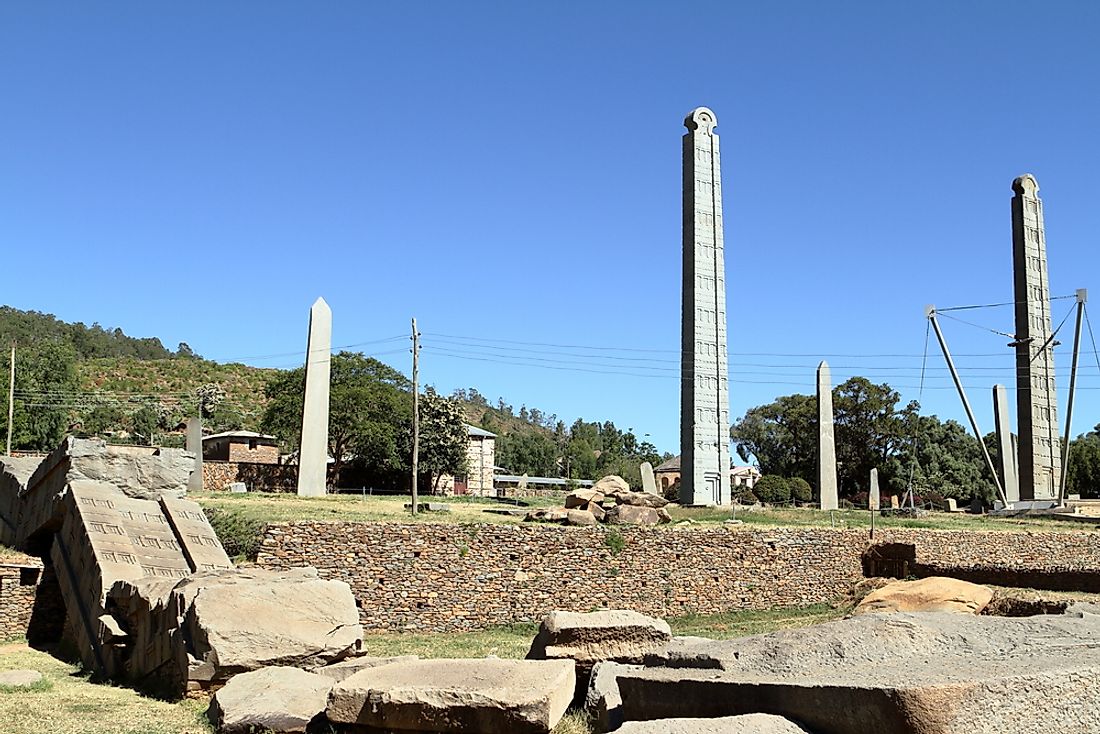
Ethiopia is a landlocked country located in East Africa. It has a mountainous landscape that is split by the Great Rift Valley. Ethiopia is a country rich with ancient history, and has nine locations that are considered United Nations Educational, Scientific and Cultural Organization (UNESCO) World Heritage sites. It is tied with Morocco for the most sites within a country in Africa.
Ethiopia's UNESCO World Heritage Sites
Simien mountains national park.
The Simien National Park is located in the North Gondar Zone, which is part of the Amhara Region of Ethiopia. The Simien National Park was established in 1969 and is currently one of twenty national parks located in the country. The Simien National Park was established as one of the first UNESCO World Heritage sites in the country in 1978. The tallest mountain in Ethiopia, Ras Dashan, can be found in the park, where it stands at 14,930 feet. The park is noted for its amazing landscapes that have jagged peaks, deep valleys and sharp cliffs, in part due to millions of years of erosion. The park is also where the endemic Gelada baboon (Theropithecus gelada) is found and is home to more than 50 different species of bird. The park is on the previously mentioned List of World Heritage in Danger due to the serious population declines in some its characteristic native species. With its endangered and endemic species, as well as other species in the park, it is a globally important area for the conservation of biodiversity.
The ancient city of Aksum is located in the Mehakelegnaw Zone that is part of the Tigray Province in the northern part of the country, close to its border with Eritrea. The ruins of the city of Askum were once the capital of the ancient Kingdom of Aksum (c. 100 - 940 AD), the center of ancient Ethiopia and a key trading center city during its height. The ruins of this once massive city date to anywhere between the 1st and 13th century A.D. At its height, the city was the most powerful and wealthy nation between the Byzantine Empire and Persian Empire and helped to be the center of trade between Europe, Africa and the Middle East, as it controlled the ivory trade and the Red Sea passage. The city has a variety of ancient structures, from the ruins of old castles and royal tombs to giant stelae and monolithic obelisks. The city also hold Saint Mary of Zion Church, originally built in the 4th century during the reign of the kingdom's first Christian king and rebuilt in the 17th century.
Konso Cultural Landscapes
The Konso Cultural Landscapes site is part of the Konso special woreda in the Southern Nations, Nationalities and Peoples Region. This site covered an area of 21.23 square miles and is made up of walled terraces and fortified settlements. The site portrays the culture, values and engineering of the Konso people going back more than 400 years and shows how they adapted to the dry and hostile environment of the area. The terraces are the dominate feature in the landscape along the hills, as they not only help keep soil from eroding, but also collect water, creating fields for agriculture. These terraced walls can be up to 16 ft tall. The fortified settlements are built upon high plains or hills for defensive purposes and are surrounded by anywhere between one to six dry stones walls, depending on the town. Inside the town there are cultural spaces, called moras, where the center of life takes place for the Konso people and marking stones called daga-hela, which are built through a ritual process. Besides the terraces and settlements, the site features stone steles that mark the passing of leaders of the generations, as well as anthropomorphic wooden statues, that mark respected members of the community or heroic events of the past.
Preserving Ethiopia's UNESCO World Heritage Sites
The Simien National Park was set up in an area inhabited by humans and at the time it was made a UNESCO World Heritage Site, about 80% of the park was used by humans in some capacity. This fact has caused many threats to the park's integrity and the critical habitats of its endangered and endemic animals, which includes threats from cultivation and erosion of soil, frequent fires and domestic livestock. However, extensions to the national park have been proposed to include several new areas that interlink and have no human activity. The park is protected under national legislation and has a presence of staff and management to help track of the species and local communities in the area. In Axum, underground structures within the site are still covered by modern homes and flooding has become a problem effecting some of the monuments at the site. Most of the authenticity of the site is intact, but it is still vulnerable due to the lack of conservation, documentation and planning controls at the site. The site is currently managed by the regional government, the Federal Administration and the Authority for Research and Conservation of Cultural Heritage (ARCCH) and is protected by the country's 1958 National Antiquities Authority. The Konso Cultural Landscape's largest threat is how dispersed the fortified settlements are from each other. The site still has most of its original design. The property is protected by federal, regional and traditional laws and the Konso Cultural Landscape Management Office is located on site to manage funding, supervision and conservation.
More in Travel
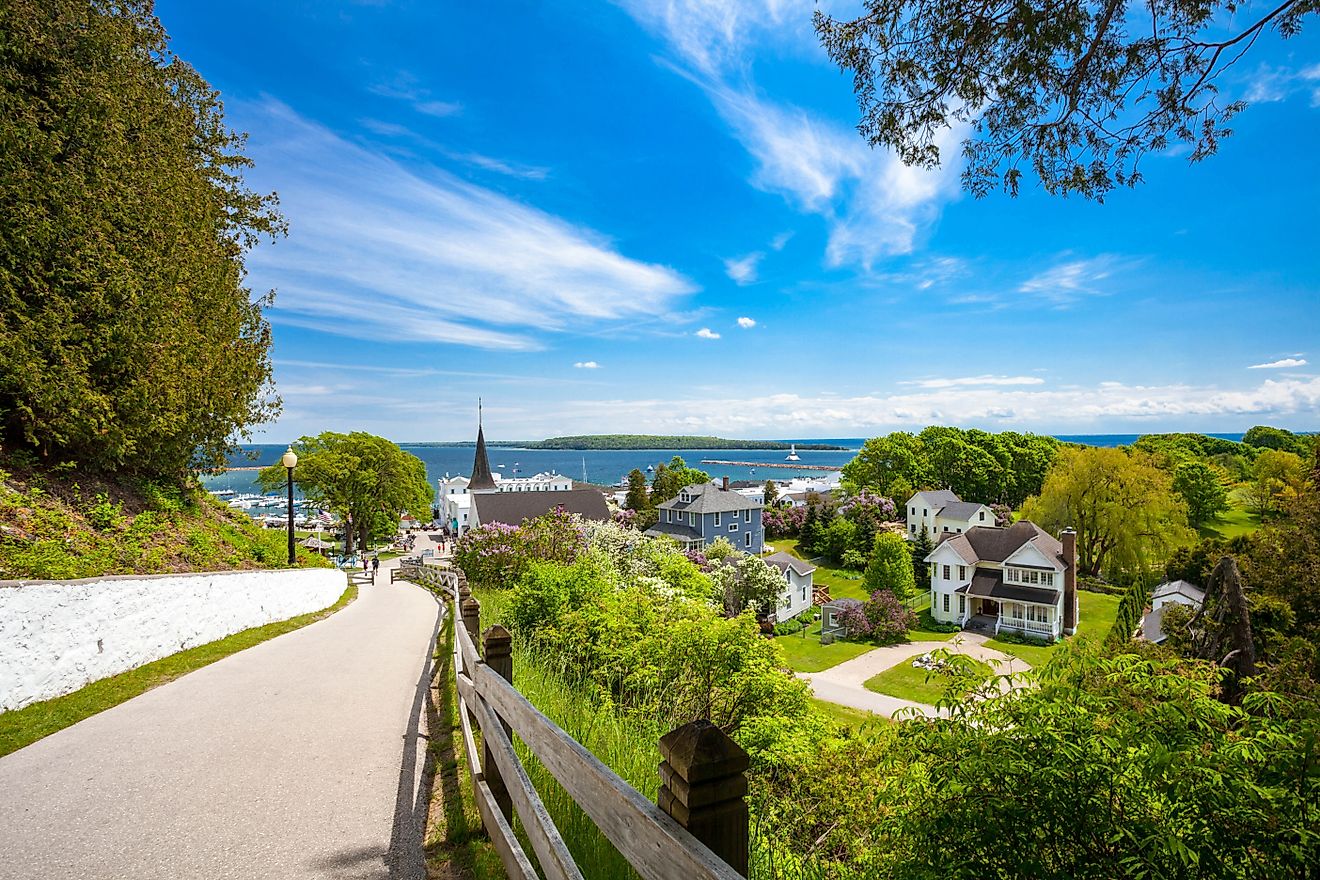
The 9 Best Towns Along Lake Michigan
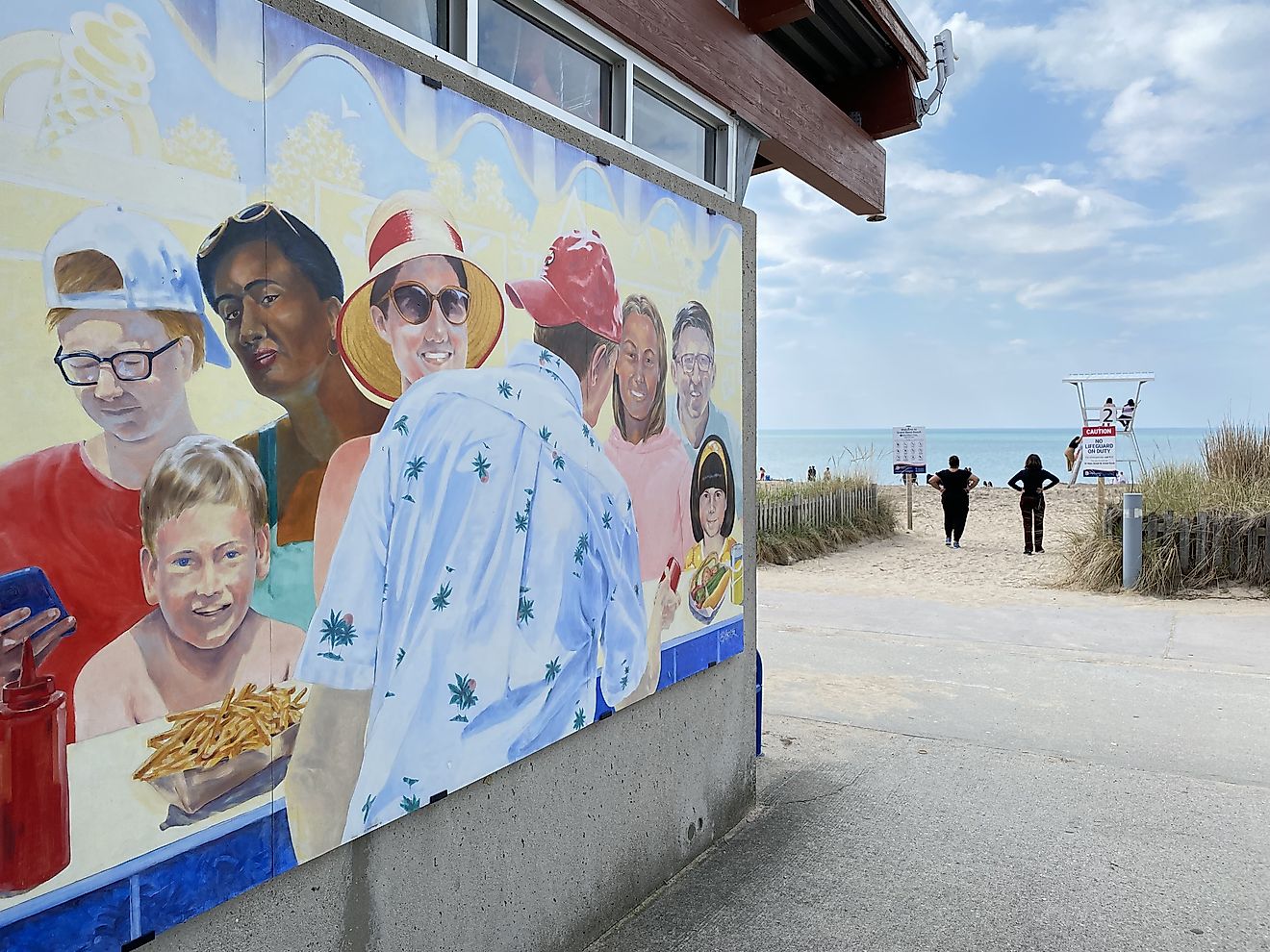
Lambton Shores, Ontario: Exploring Nature and Community
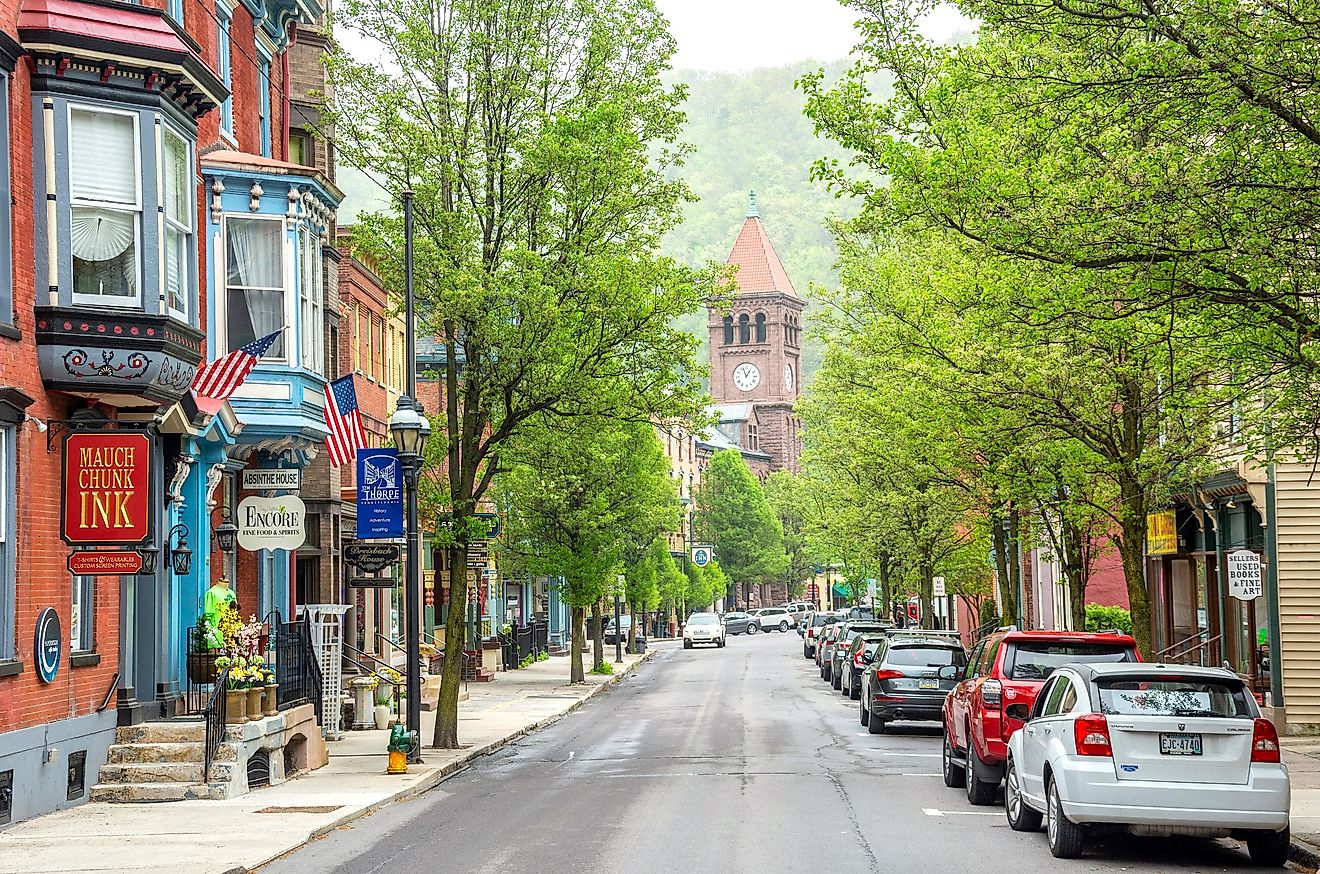
11 Most Underrated Towns In Pennsylvania To Take A Trip To
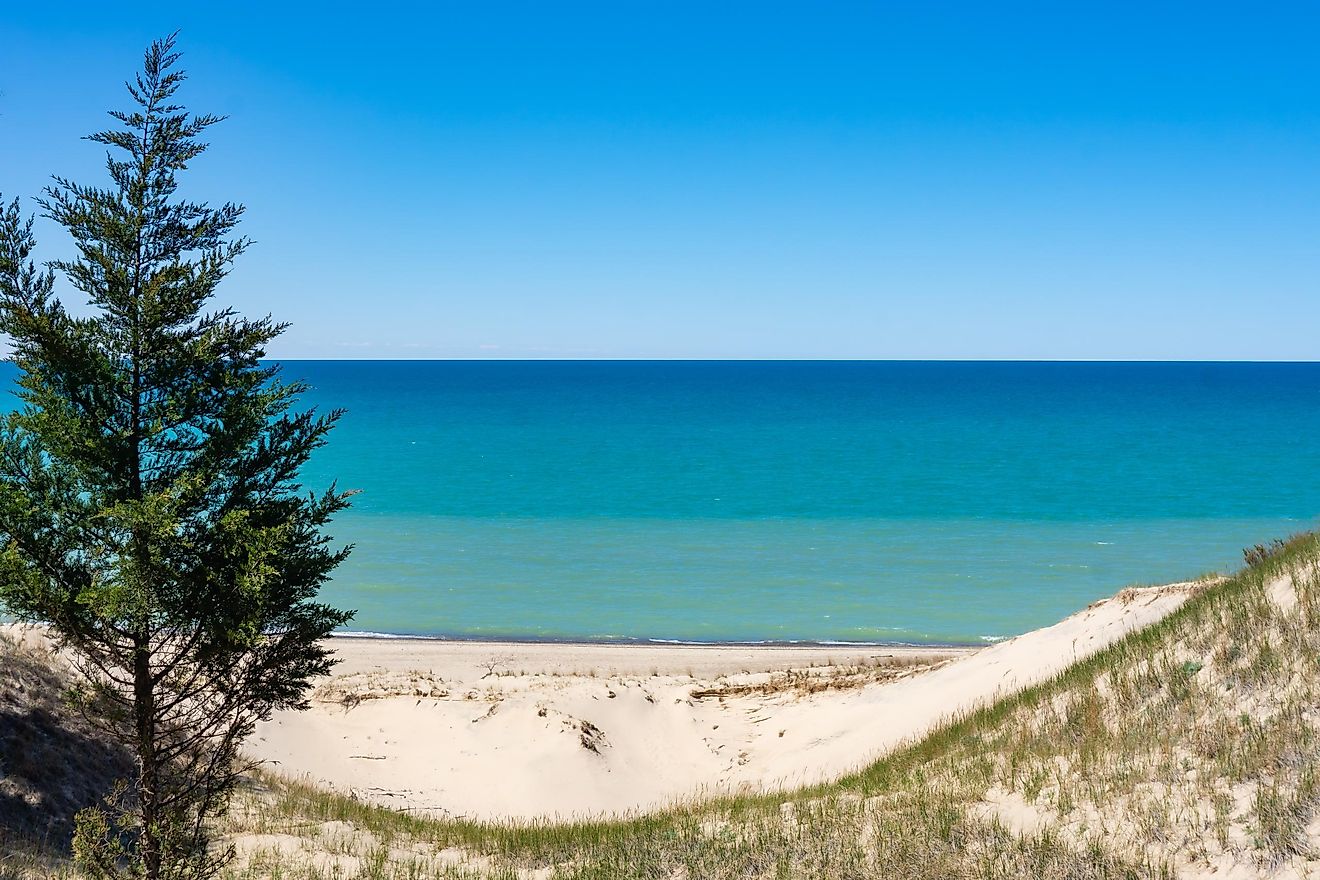
Indiana Dunes vs Warren Dunes: Comparing Two Lake Michigan Parks

13 Most Underrated Towns In New York To Take A Trip To

Tales in Transit: The Twists & Turns of World Travel

13 Most Underrated Towns In Massachusetts To Take A Trip To

9 Most Underrated Towns In Washington To Take A Trip To
Tsega Ethiopia Tours
- Useful Information
- Ethiopia’s Capital & Bahir Dar cities
- Topography & Climate
- Useful Amharic Words
- Debre Damo Monastery
- Diredawa & Harar
- The Rock Hewn Churches of Tigray
- The Temple of Yeha
- Erta Ale And Dallol Depression
- Abijatta-Shalla Lakes National Park
- Awash National Park
- Bale Mountains National Park
- Semien Mountain National Park
- Sof Omar Cave
- The Dorze People
- The Konso Village
- The Hamer People
- The Karo people
- The Awura Amba Community
- Ethiopian New Year (Enkutatash)
- Finding Of The True Cross (Meskal)
- Ethiopian Christmas (Genna)
- Ethiopian Epiphany (Timket)
UNESCO Registered Sites In Ethiopia
- Endemic Wildlife To Ethiopia
- Customized Tours
- Bahirdar City Tour
- Bahir Dar-Boat Trip On Lake Tana
- Bahir Dar- Blue Nile Fall
- Bahir Dar – Awra Amba Community
- Bahir Dar – The Source Of The Blue Nile (Sekela) & Lake Zengena
- Bahir Dar- Debretabor – Guna Mountain & Its Vicinity
- Bahir Dar -Tara Gedam Monasteries
- Half Day City Tour
- Full Day City Tour
- Addis – Adadi Mariam
- Addis Ababa – Abijata-Shalla
- Addis – Debrelibanos
- Addis – Langano
- Addis – Ankober
- Gondar City Tour
- Gonder – Gorgora And Its Surroundings
- Gondar – Simien Mountains National Park
- Historic Route 8 Days And 7 Night
- Northern Circuit 13 Days And 12 Nights
- Northern Highlight 9 Days And 8 Nights
- Historic Route By Flight 7 Days And 6 Nights
- 8 days to the Omo Valley
- 10 days tour to omo vally and Bale mountains
- 13 days to the Omo valley, Bale mountain and Harare
- Explore To The Exotic People
- Danakil Depression- Afar- Erta Ale
- Simien Mountain Highlight
- History & Nature With Maskel Festival
- Historic Route With Christmas In Lalibela
- Historic Route With Timket Festival In Gondar
- Historic Route With Christian Pilgrimage
- Historic Route With Muslim Pilgrimage
- Northern Ethiopia And Omo Valley
- Ethiopia Highlight 34 Days And 33 Nights
Ethiopia has the biggest share of Africa‘s world heritage sites registered by UNESCO. Cradle of mankind, Home of “Dinqinesh “Lucy” the worlds oldest known hominid &Custodian of some of the world’s ancient civilizations and where human beings migrated across the world.
- The Ancient City of Axum: site of mysterious obelisks, (1980)
- The Rock Hewn Churches of Lalibela site of the 8th wonders of the world,(1978)
- The 17th century historic city of Gondar: 17th c castles & famous churches (1979)
- The walled town of Harar: old walled town, mosques, shrines, hyena men (2006)
- The Semein Mountain National park: spectacular scenery, endemism & biodiversity (1978)
- The Konso cultural landscape: Mixe cultural and natural land scape(2011)
- The Tiya stele: the ancient embellished stelae (19800
- The Lower Omo Valley: the worlds oldest known hominid (1980)
- The Lower Awash Valley: “Dinqinesh “Lucy” the worlds oldest known hominid (1980)
- The Meskel celebration: A coloreful of Mesleke celebration (2013)
- The Lake Tana and its monasteries: Man and nature- bispher reserve area (2015)
Tentatively UNESCO registered sites in Ethiopia:
- The Bale Mountains National Park (2008)
- The Dirre Sheik Hussein Religious, Cultural and Historical Site (2011)
- The Sof Omar natural and cultureal heritage. (2011)
- The Gedeo Mixed Cultural and Natural Landscape (2012)
- The Melka Kunture and Bachilt Archaeological Site
Boundless Ethiopia
Your local travel expert
UNESCO World Heritage Sites of Ethiopia
There are a total of nine UNESCO World Heritage sites in Ethiopia, more than in any other African country. Eight sites are of cultural origin and one is natural. This number represents the importance of Ethiopia’s rich history.
- The cultural landscape of Konso (2011)
- The fortified historic town of Harar Jugol (2006)
- The ancient city of Axum (1980)
- The archeological site of Tiya (1980)
- The lower valley of the Awash (1980)
- The lower valley of the Omo (1980)
- Fasil Ghebbi (The Royal Enclosure) in Gondar (1979)
- Simien Mountains National Park (1978)
- The rock-hewn churches of Lalibela (1978)
Intangible Cultural Heritage of Humanity
Besides the World Heritage Sites, there are also several Intangible Cultural Heritage of Humanity inscribed with UNESCO.
- Timket , Ethiopian Epiphany (2019)
- Gada , an indigenous democratic socio-political system of the Oromo people (2016)
- Fichee-Chambalaalla , New Year festival of the Sidama people (2015)
- Meskel , Commemoration feast of the finding of the True Holy Cross of Christ (2013)
Biosphere Reserves
- Majang Forest (2017)
- Lake Tana (2014)
- Sheka Forest (2012)
- Kafa (2010)
- Yayu (2010)
Our most popular packages

Best of Ethiopia, 29 days
This is a fine example of combining some of our suggested itineraries to a 'Best of Ethiopia' tour. It is…
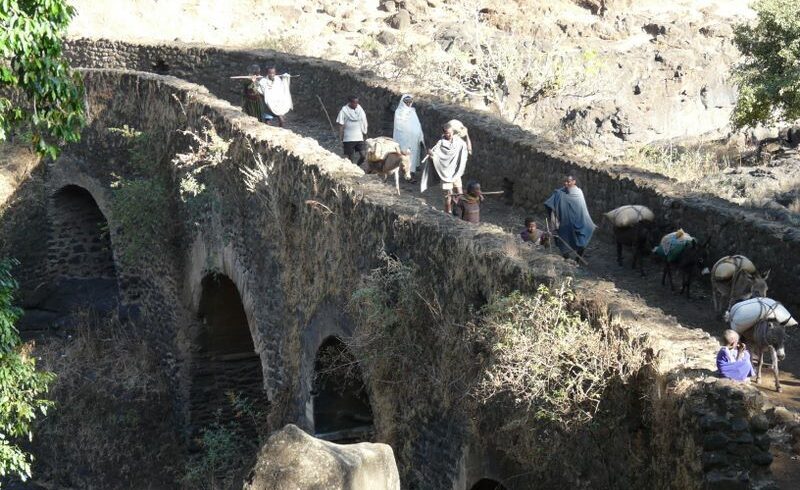
Historical Route by surface, 14 days
For us this is the classic 'Historical Route'. It takes you to all the important historical sites of northern Ethiopia…
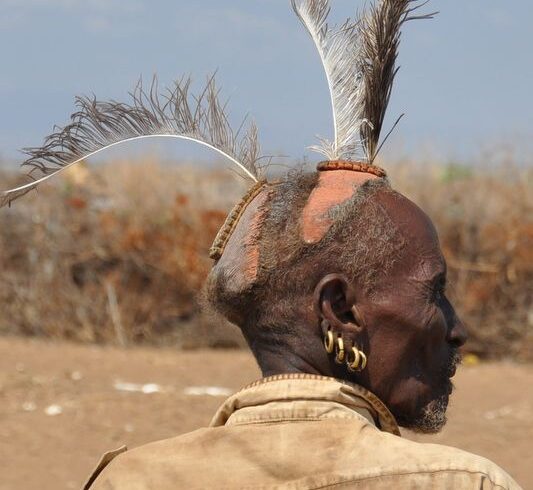
Cultural South, 14 days
This is a perfect balanced itinerary to meet different ethnic groups in the south. Meanwhile you can enjoy the natural…
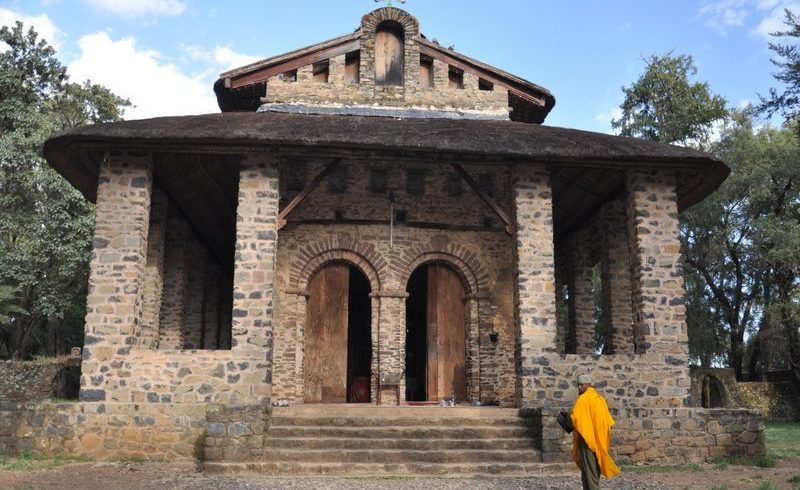
Historical Route by flight and surface, 10 days
This is the shortest possible tour which takes you to all the important historical sites of northern Ethiopia and includes…
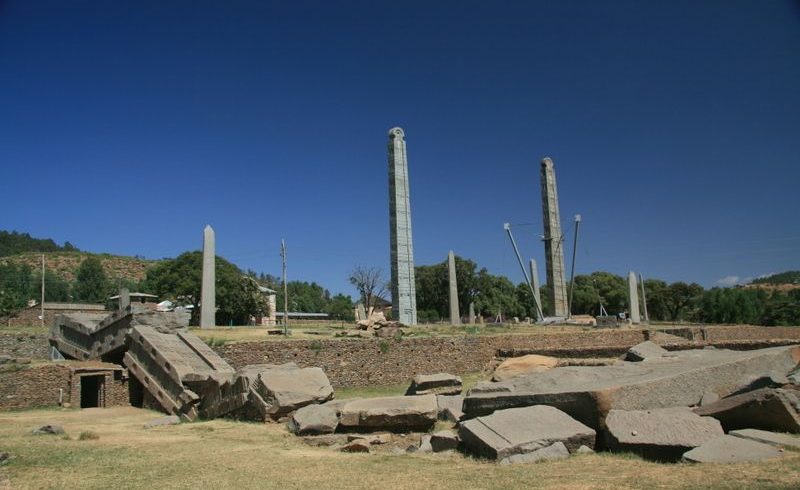
Historical Route by flight, 7 days
When your time is really limited but you want to include all the important historical sites of northern Ethiopia in…
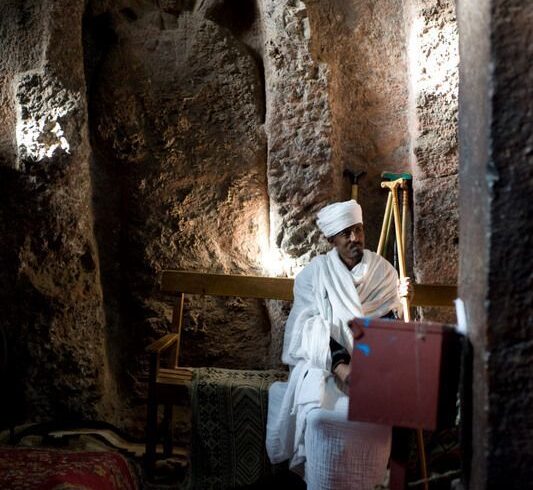
Lalibela by flight, 3 days
A visit to the rock-hewn churches of Lalibela is the highlight of any visit to Ethiopia. The 12th century churches…

- Tour Costs & Terms
- Ethiopian Charity Projects
- Past Travellers Comments
- Wildlife and History Tour
- Harrar Tour Ethiopia
- Afar Desert Tour Ethiopia
- Omo River Valley Tour Ethiopia
- Mountains and Mystery Tour
- Train to Harrar Tour
- Ethiopia Blog
- Ethiopian History
- Ethiopian People
- Little Known Facts
- Ethiopian Flora
- Flora of Ethiopia
- Ethiopian Fauna
- Explore Ethiopia
- World Heritage Sites
- Ethiopian Tourism
- African Tours
- Ethiopia Travel
- Tours of Ethiopia
- Travel to Africa
- Adventure Travel
Ethiopia's UNESCO World Heritage Sites
Explore ethiopia's unique unesco world heritage sites.
Ethiopia has nine UNESCO World Heritage Sites and we can take you to all of them. No African country has more United Nations Educational, Scientific and Cultural Organization (UNESCO) sites than Ethiopia. UNESCO recognizes and protects sites of globally significant, cultural or natural heritage value. In Ethiopia, 8 are cultural and one is natural - the Simien Mountains National Park.
Ethiopian Adventure Tours will take you to 7 of these incredible locations on our 16-day Wildlife and History tour - Konso Cultural Landscape and the Lower Valley of the Omo River are the two southern sites that are visited as part of the 7-day Lower Omo River valley tour.
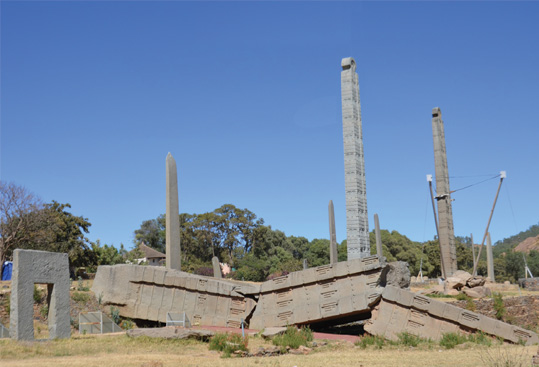
Axum (or Aksum) – northern Ethiopia
The Kingdom of Axum dominated the area between the eastern Roman Empire and ancient India and grew rich and powerful through its control of key trade routes. The city’s ruins – dating between the 1st and 13 century AD include the world’s largest monolithic obelisk known locally as stelae – some of which rise above 23 metres. The Ezana stone with the same message chiseled in 3 ancient languages has an historic and linguistic significance similar to the Rosetta Stone of Egypt. The Ark of the Covenant and the ruins of the palace of the Queen of Sheba are believed to be at Axum.
Fasil Ghebbi – a fortress city, Gondar
Fasil Ghebbi in Gondar city, also known as the Royal Enclosure is a fortress-city and, was the residence of the Ethiopian emperor Fasilidas and his successors. Fasilidas built the first fortified royal residence known as Fasilidas’ Castle inside a high perimeter wall with 12 gates. Gondar has several ancient sites including the extraordinary 'Fasil's Bath' and the beautiful murals of Debre Birhan Selassie church known for the angel faces painted on its ceiling. Fasil Ghebbi was also Ethiopia’s capital during the 17th to 19th centuries.
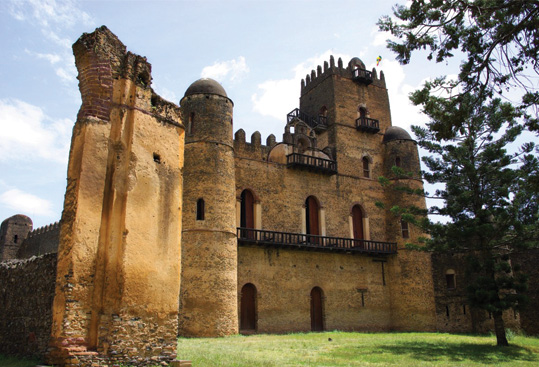
Harar Jugol -
This ancient walled city of labyrinthine alleyways is considered to be the fourth holiest city in Islam (after Mecca, Medina and Jerusalem). Located in the drier and hotter eastern lowlands, Harar is a recipient of a UN City of Peace medal and is known for the history of peaceful relations between Muslims, Christians and the five ethnic groups in the region. Harar grew to prominence as a centre of the coffee trade, its position on key trade routes and came to be known as The City of Saints for its status in Islamic culture in this east African region.
Awash River – The Birthplace of Humanity
The earliest known remains from the beginning of our species have been found in this region; considered the world's most early human ancestor, the 3.2-million-year-old ape "Lucy" was the first Australopithecus afarensis (extinct hominin) skeleton ever found though her remains are only about 40 percent complete.The Awash River drains rainfall from the highlands and runs through the homeland of the Afar people into the Afar/ Danakil Desert eventually evaporating in a series of lakes before it reaches the Red Sea coast.
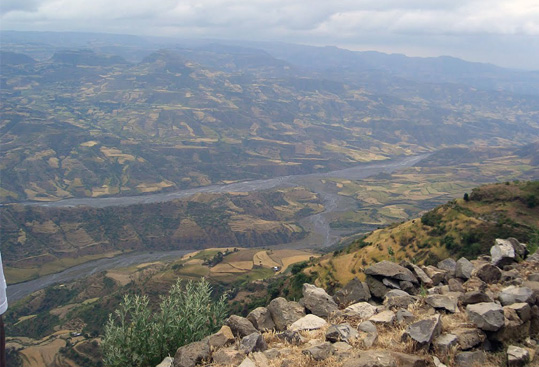
Rock-Hewn monolithic Churches of Lalibela
As one of Ethiopia’s holiest cities in the Orthodox Christian tradition and a centre for pilgrimage, Lalibela is known primarily for its 11 ancient medieval churches carved out of solid rock dating from the 12th century. The churches weren’t built with traditional methods but were rather hewn from solid rock, chiseled on the outside and elaborately carved out and decorated on the inside. These ancient buildings’ construction are attributed to King Lalibela as a safer pilgrimage destination as a ‘New Jerusalem’ after Muslim forces captured Jerusalem in 1187. Lalibela was also Ethiopia’s capital from late 12th century to the 13th century.
Tiya Stelae Field – Central Ethiopia
The ancient archaeological site of Tiya boasts over 36 monolithic monuments or columns, including 32 carved stelae with symbols chiseled in relief that signify the ancient culture of Ethiopia, the age of which has not yet been completely determined. The identity of the artists/ architects is unknown, but stone stools dated from 250,000 – 280,000 years ago have been found nearby. The stelae are considered to have been built between the 11th and 13th centuries CE.
Please note that a visit here is optional.
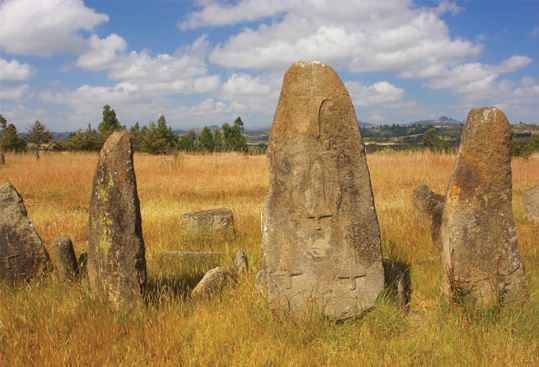
Simien Mountains National Park - the Roof of Africa
The Simien Mountains National Park is the heart of Africa's greatest mountainous area. The Simien Mountains were built by eroded volcanic cores from eruptions dated as 75 m years ago. The scenery is breathtaking with an array of rivers, forests and a rich cultural heritage. The Simien Mountains’ highest peak and Africa’s 10th highest, is Ras Dashen at 4,550 m. This region is home to some spectacular endemic mammal species – including the Gelada Baboon, the Walia Ibex, Caracal and the Simien Wolf. The mountains are also populated with large birds of prey such as the Lammergeier with its spectacular 3 m wingspan.
Konso Cultural Landscape – Ethiopia
This area is home to the local Konso people in the far south of Ethiopia. The Konso people use traditional terracing and irrigation techniques in this mountainous region. Wooden carvings called Waga sculptures honour the memory of respected ancestors. Fossils found in the area indicate the ancient presence of some of our earliest hominid ancestors.
See our new 7 day tour to the Lower Valley of the Omo River that includes a visit to Konso.
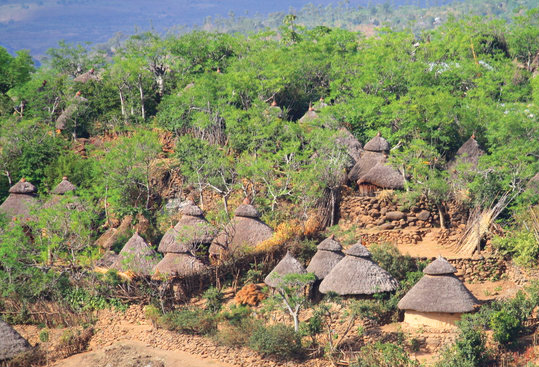
Lower Valley of the Omo River – Ethiopia
The Omo River is also in the far south of Ethiopia and drains south into Lake Turkana in Kenya. The entire area is important archaeologically and geologically with fossils and tools found at several locations from 2.4 m years ago. The great diversity of peoples and cultures in this region lead many scholars to think it was an ancient crossroads for migrating ethnic groups and cultures.
See our new 7 day tour to this fascinating region.

- Itineraries
- About Ethiopia
Welcome to Ethiopian Adventure Tours!
Sam will guide you through the magical heartland of Africa – travelling through Ethiopia you will enjoy the hospitality of incredible people and be enriched by the amazing history. Come with us and explore these unique dynamic environments on your Ethiopian travels.
This is an Ethiopian tour adventure to the cradle of human kind and an experience you will hold dear for many years to come.
Experience your own Ethiopia tour
Contact us today to join a travel group with Ethiopian Adventure Tours P O Box 68709 Newton Auckland, New Zealand 1010
Phone Sam on +64 21 608 084
© Copyright 2024 Ethiopian Adventure Tours
Website Design & SEO by Illuminate By Design

RJ Travel LLC » Travel Agency & Tour Operator
Re-writing the concept of tourism and taking you on adventure tours to Iraq, Morocco, Afghanistan, Yemen, Persia, Lebanon, Saudi, Libya, Uzbekistan.
- Adventure tours
- UNESCO sites
Ethiopia UNESCO World Heritage Sites
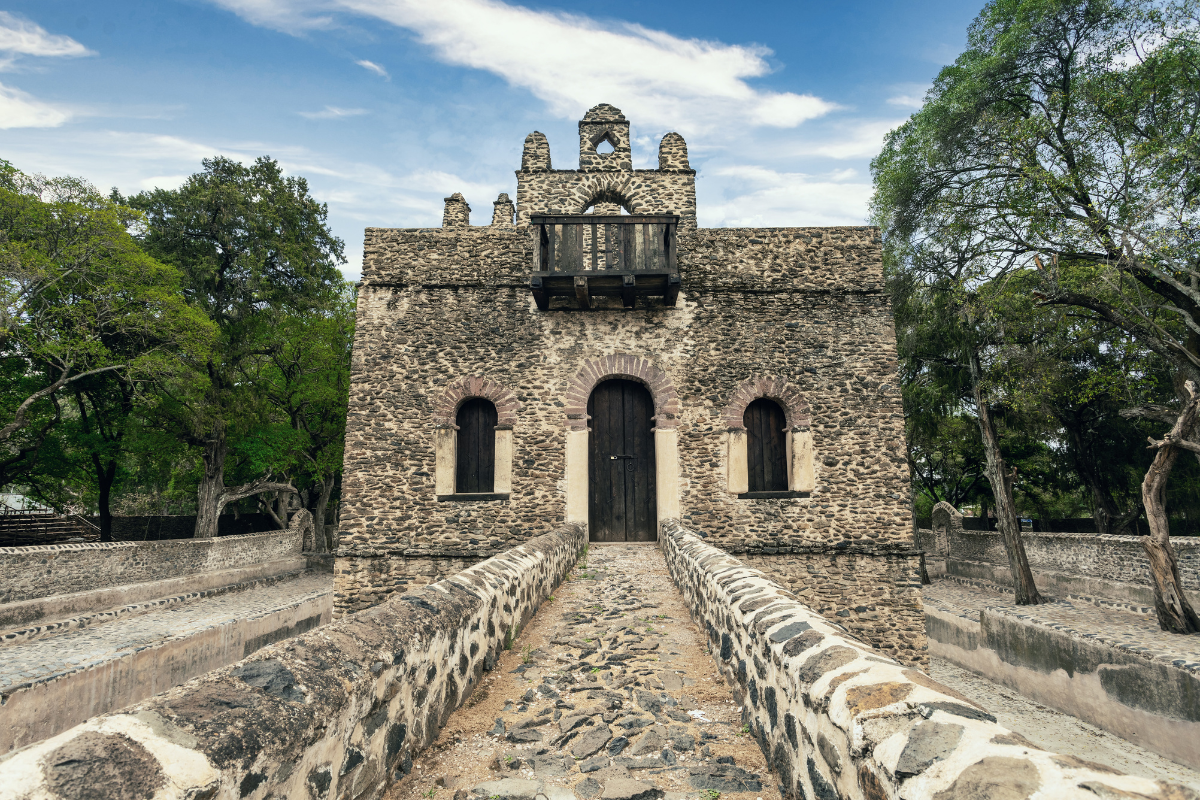
Table of Contents
The UNESCO Sites in Ethiopia have resulted from the recognition of 9 cultural and natural landmarks as UNESCO World Heritage Sites in Ethiopia and 8 locations on the Ethiopia UNESCO tentative list. These touristic sites in Ethiopia are acknowledged for their unique and valuable cultural, natural, artistic, and historic significance, and are preserved for future generations to enjoy.
In addition to these 9 sites in the Ethiopia UNESCO list , there are many other places to travel to Ethiopia that are being considered for UNESCO recognition. These sites, listed on the tentative list, showcase the rich cultural heritage of the country and are waiting for approval to join the prestigious and famous World Heritage Sites list.
To help visitors discover these remarkable Ethiopia tourist attractions , we have put together an interactive map of the UNESCO sites in Ethiopia .
Ethiopia UNESCO Map
Click markers to show information and photo.

UNESCO World Heritage Sites in Ethiopia
There are 9 UNESCO World Heritage Sites in Ethiopia. All of these nine sites are listed under the Cultural category.
- Rock-Hewn Churches, Lalibela
- Simien National Park
- Fasil Ghebbi, Gondar Region
- Lower Valley of the Awash
- Lower Valley of the Omo
- Harar Jugol, the Fortified Historic Town
Konso Cultural Landscape
UNESCO World Heritage Sites in Ethiopia are protected locations for their cultural and natural importance.
A former city in Ethiopia that served as the heart of ancient Ethiopia. It boasts several ruins including royal tombs, ancient castle ruins, and monolithic obelisks. UNESCO recognized this city as a World Heritage Site for its cultural significance.
Fasil Ghebbi, Gondar region
A former palace compound includes eight component sites, including a palace, monastery, church, and thermal area. This site was established as the capital of Ethiopia by King Fasil in the 17th century and was recognized as a World Heritage Site by UNESCO.
Hara Jugol, the Fortified historic town
A fortified and historic town that is culturally significant in Ethiopia. It showcases the fusion of Islamic and African traditions with 82 mosques and 102 shrines. The town is considered the holiest city for Islam and was recognized as a World Heritage Site by UNESCO.
An arid property that showcases a cultural tradition of stone-walled terraces and fortified settlements. It has been around for over 21 generations and is an excellent example of adaptation to a dry and hostile environment. The site holds wooden statues honoring key community members and stone steles marking the passing of important leaders.
The lower valley of the Awash
A palaeontological site that holds the largest and most important collection of remains in Africa, dating back over 4 million years. It is an excellent example of human evolution and was recognized as a World Heritage Site by UNESCO.
The lower valley of the Omo
A prehistoric site famous for its fossil remains, including the Homo gracilis. This site was fundamental in studying human history and evolution and holds the Fejej and Konso paleontological research sites.
Rock-Hewn churches, Lalibela
The ‘New Jerusalem’ boasts of 11 monolithic cave churches built in the 13th century. The site is considered a place of pilgrimage and devotion for the Christian community in Ethiopia and was recognized as a World Heritage Site by UNESCO.
Simien national park
A national park that serves as a refuge for many endangered species, including the Walia ibex and Ethiopian wolf. The park was recognized as a World Heritage Site by UNESCO in 1978 and was included in the list of World Heritage Sites in Danger in 1996.
A site in the Soddo region of Addis Ababa comprises 36 monuments with 32 carved stelae marked with symbols. It is considered the most important of the over 160 archaeological sites in the region and is an essential example of Ethiopian culture, of which much remains undiscovered.
Ethiopia UNESCO tentative list
- Bale mountains national park
- Dirre Sheik Hussein Religious, cultural, and Historical Site
- Holqa Sof Omar: Natural and Cultural Heritage (Sof Omar: Caves of Mystery)
- Sacred Landscapes of Tigray
- Melka Kunture and Balchit
- Gedeo Cultural Landscape
- The cultural heritage of Yeha
- Lake Tana Island Monasteries and its Adjacent Wetland Natural and cultural Heritages
Tours in Ethiopia
Our choices of tours in Ethiopia are divided into thematic features such as Aksum, Fasil Ghebbi, Hara Jugol, Konso Cultural Landscape, and the lower Valley Of The Awash Experience.
- Have any question?
- Phone +251-911-512439
- [email protected]

- Lalibela - 8th wonder
- Axum Historical Site
- The Castles of Gondar
- The Simien Mountains
- Harar – the Walled Town
- Tiya Archaeological Site
- Awash Lower Valley
- The Lower Omo Valley
- Konso Landscape
- About Ethiopia
- Tip for travelers
- Debre Damo Monastery
- Rock-hewn churches of Lalibela
- Axum and its ancient civilizations
- Gondar and its medieval period
- Temple of Yeha
- Rock-hewn churches of Tigray
- Lake Tana and its medieval period
- Ankober and Menelik II Palace
- The Blue Nile Falls
- Sof Omar Cave
- Danakil Depression
- Birding in Ethiopia
- Blue Nile Gorge
- Tiya steale
- Enkutatesh (New Year Celebration)
- Meskel (finding of true cross)
- Timket (Ethiopian Epiphany)
- Genna (Ethiopian Christmas)
- St. Mary of Zion festival
- Tribes of Omo Valley
- Addis Ababa - Capital City
- Debre Libanos Monastery
- Tiya & Adadi Mariam
- Wenchi Create Lakes
- Abijata-Shalla National Park
- Awash National Park
- Bale Mountains National Park
- Gambella National Park
- Mago National Park
- Nechi Sar National Park
- Omo National Park
- Simien Mountains National Park
- Yangudi-Rassa National Park
- Addis Abeba & Surrounding Tours
- North by Surface
- North by Air
- Simien Mountains
- Danakil Depressions
- Southern Ethiopia tours
- Eastern Ethiopia Tours
- Combination Tours
- Lalibela - 8th wonder of the world
Rock Hewn Churches of Lalibela (The 8th wonder of the world: Lalibela)
Lalibela is designated as world Heritage site in 1978. Originally thought to have been built in the 12th century during the reign of King Lalibela, but some have been dated back to the 10th century. There are eleven churches, assembled in three groupings; the Northern Group: Bete Medhane Alem, home to the Lalibela Cross and believed to be the largest monolithic church in the world. It is linked to Bete Maryam (possibly the oldest of the churches), Bete Golgotha (known for its arts and said to contain the tomb of King Lalibela), the Selassie Chapel and the Tomb of Adam. The Western Group: Bete Giyorgis, said to be the most finely executed and best preserved church. The Eastern Group: Bete Amanuel, Bete Merkorios, Bete Abba Libanos and Bete Gabriel-Rufael. Further afield lay the monastery of Ashetan Maryam and Yimrehane Kristos church.
More Articles ...
- Axum Historical and Archaeological site
- Awash Lower Valley paleontological and prehistoric sites

UNESCO Sites
- The Simien Mountain National Park
- Awash Lower Valley Sites
- Konso Cultural Landscape

Quick Links
- Our Services
- Testimonials
- Ethiopian VISA
- Phone: +251 (0)911 228465
- Fax: +251 (0)11 5 547192
- Email: [email protected]
- P.O.Box: 1628/1110, A.A, Ethiopia

UNESCO’s World Heritage Sites of Ethiopia
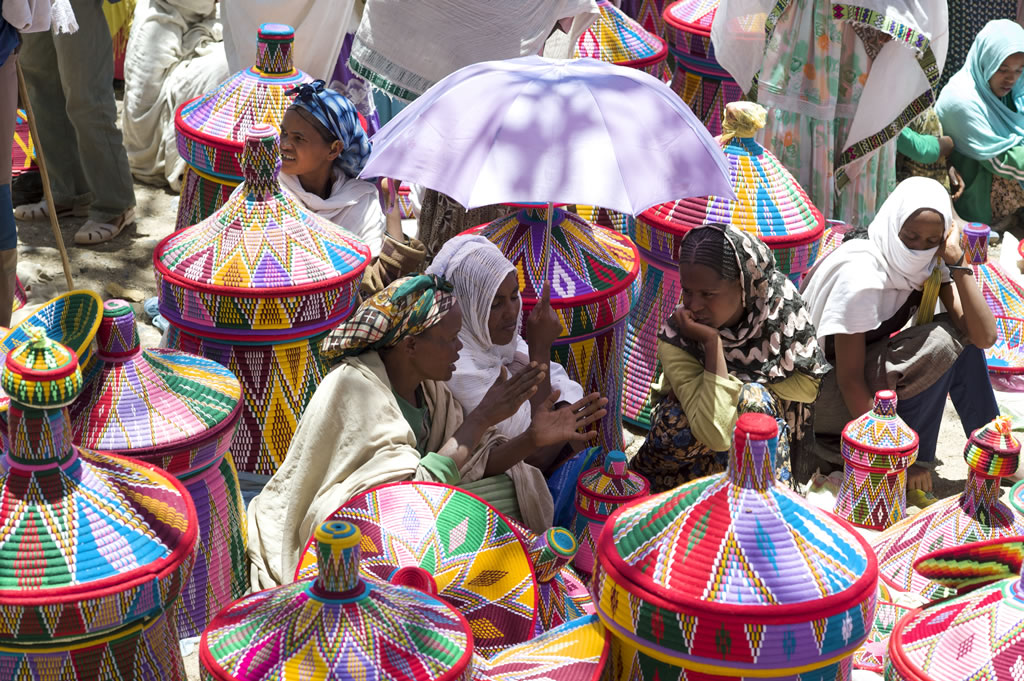
Here we are, back again with our column: “UNESCO’s World Heritage Sites of…” Since we talked about South America, Europe and Asia a lot, we figured it was time to move our attention to Africa and focus on the beautiful Ethiopia.

This country is located in central Africa and it borders on Somalia, Kenya, Sudan and Eritrea.
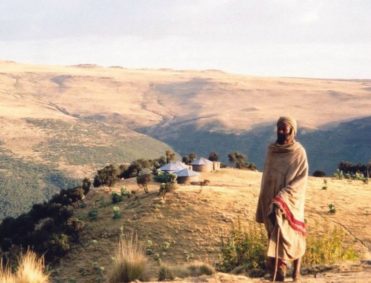
The UNESCO chose 9 places from Ethiopia to put under its World Heritage Sites List, and among those nine, 8 are cultural and 1 natural. The majority of the sites have been under UNESCO since the late 1970s, early 1980s, a part from two – Harar Jugol, the Fortified Historic Town (2006) and Konso Cultural Landscape (2011) – which have only been recently added to the list.
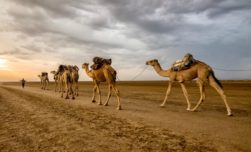
The Golden Scope decided to tell you and show 4 places out of the 9 from the World Heritage Sites List, so here they are.
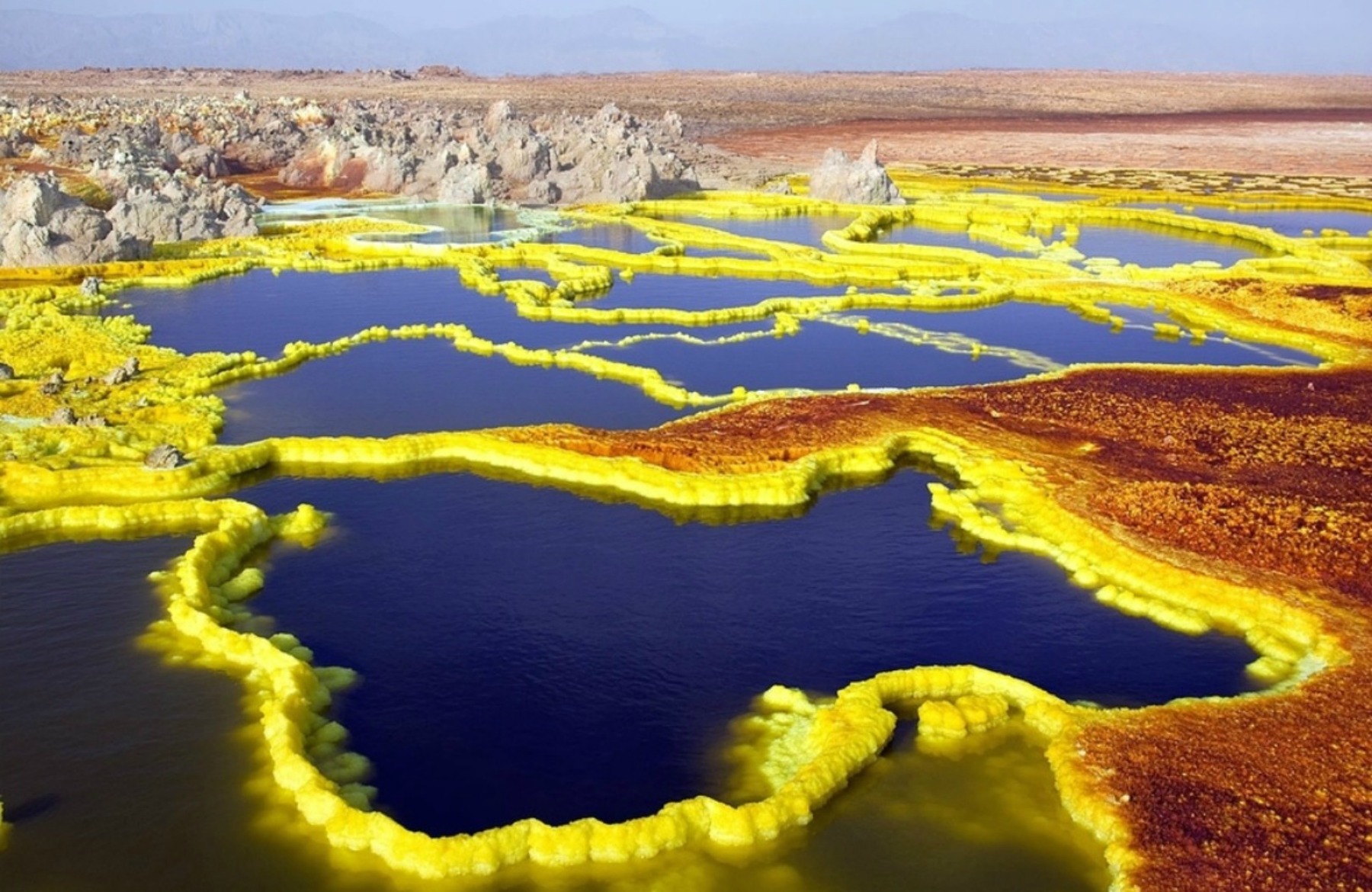
Rock-Hewn Churches, Lalibela, (1978) are medieval monolithic cave churches located in a mountainous region not to far from the country’s capital city, Addis Ababa. Built in the 13 th century, these churches were made from monolithic blocks. Among the numerous Rock-Hewn Churches are Biete Medhani Alem, Biete Maskal, Biete Denagel and Biete Ghiorgis.
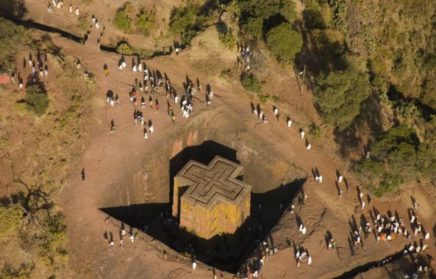
Simien National Park (1978) is situated in north Ethiopia and features breath-taking landscapes of valleys, mountain peaks and sharp precipices. This park is also home to rare species, such as the Walia ibex, a mountain goat that can only be found in that region of the world, and the Ethiopian wolf.
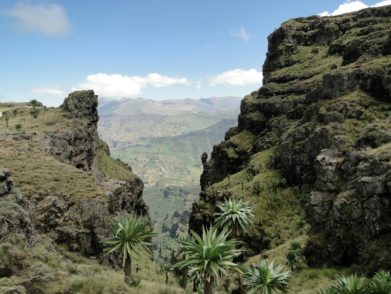
Aksum (1980) is an ancient city that was built between the 1 st and the 13 th century A.D. The ruins can found in northern Ethiopia and they are few of the remaining traces of the ancient Aksumite Civilization, who used to rule the African region during the Greco-Roman Empires. Today Axum, with its many churches. is considered the spiritual capital of Ethiopia.
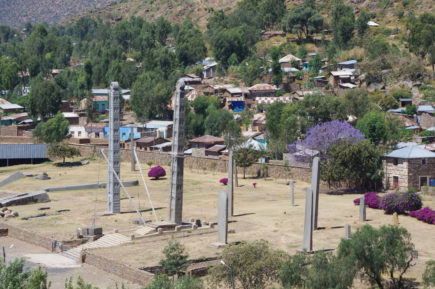
Fasil Ghebbi (1979) is positioned in the Amhara National Regional State, in the Gondar region. This beautiful fortress-city used to be the residence of the Ethiopian emperor Fasilides and his successors, and it can be dated back to the 16 th /17 th century. Fasil Ghebbi is completely surrounded by a 900meters long wall.
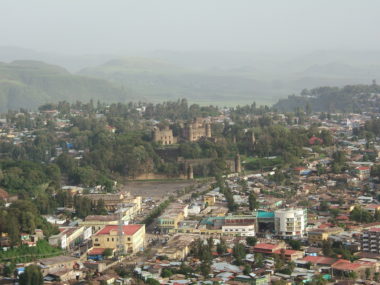
T H E V I D E O
(All the photos are taken from Google.com, all the videos are taken from YouTube.com, and all belong to their original owners-We do not own any of the content posted-Removal upon request)
Related Posts
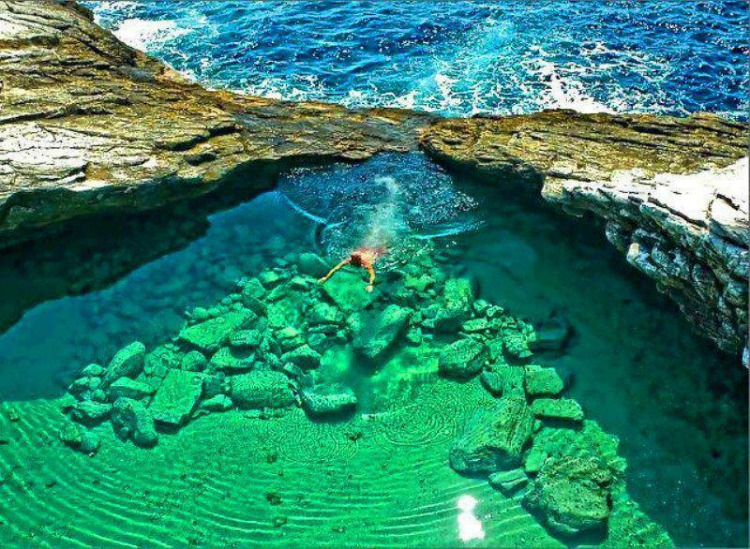
When Nature creates pools
Mother Nature awards us everyday with unique and incredible shows, such as breath-taking sunsets, colorful sunrises and unique landscapes.
The Golden Scope is trying to find and

Hay On Wye, the kingdom of the book
Wales is part of the United Kingdom, its territory covers the south-western part of the Britain’s island and its about 3 million inhabitants are mainly concentrated on

Strange and beautiful fountains around the world
Vibrant, colorful and magnificent are the world most beautiful and strangest fountains. From East to West, The Golden Scope scouted and found unique fountains that not only
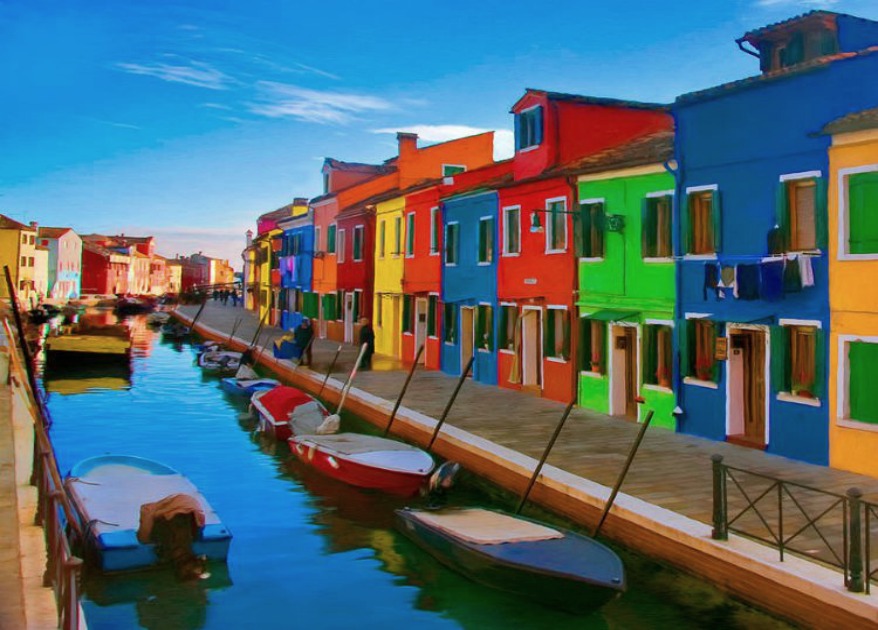
Burano, the island of colors
In the northern part of the Adriatic Sea there is the Venice lagoon, enchanting a romantic locality; a must for all international tourists visiting northern Italy. In
Instagram Gallery
Copyright © 2024 The Golden Scope. All Rights Reserved. Contact us / Disclaimer / Privacy
The 22 Best Places to Visit in Ethiopia
With the most UNESCO World Heritage Sites than any other African country (including Egypt), Ethiopia is a hidden gem that is overlooked by many travellers. With such cultural diversity, archaeological pedigree and natural beauty, there's a good reason why its a so high on the Wild Frontiers travel list.
From our years of experience travelling in Ethiopia, we have pulled together what we think are the best places to visit in Ethiopia. So, let us jump into it.
Addis Ababa
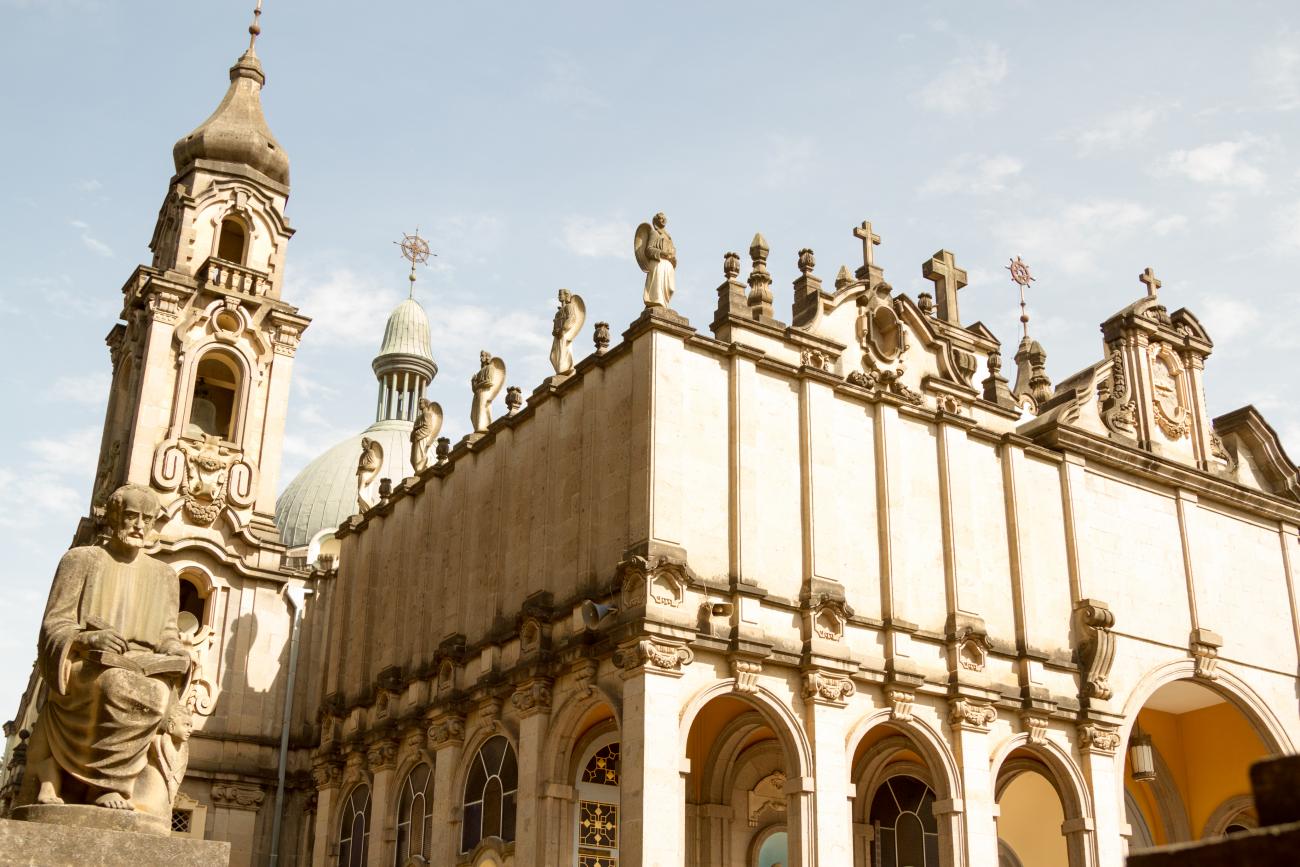
Ethiopia's capital is located more or less in the dead centre of the country and is the world's third-highest capital at 2,400 m. Its name means 'New Flower' and it is a relatively modern city, founded in 1887 by Emperor Menelik II. In just over a century it has grown from nothing into a modern metropolis of several million people. Its altitude lends it a comfortable climate and throughout the year the weather is temperate with just the occasional downpour.
The northernmost city in the unspoilt Tigray region, Adigrat is an ideal stopping point en-route from Axum to Mekele. Although the town itself is nothing special, a new lodge has recently opened on the outskirts of town, which is a comfortable base to explore the rock churches for which the Tigray region is famed.
MORE INSPIRATION IN ETHIOPIA
With stunning views in all directions, the town of Arba Minch is situated in a truly spectacular location. It lies at an elevation of 1,300m in the foothills of the Rift Valley and mountains rise up to almost 4,000m to the west. The town comprises 2 separate settlements, Sikela and Shecha that are 4 km apart and connected by a sealed road, so although the total population is around the 75,000 marks it still retains a small-town atmosphere.
Awash National Park
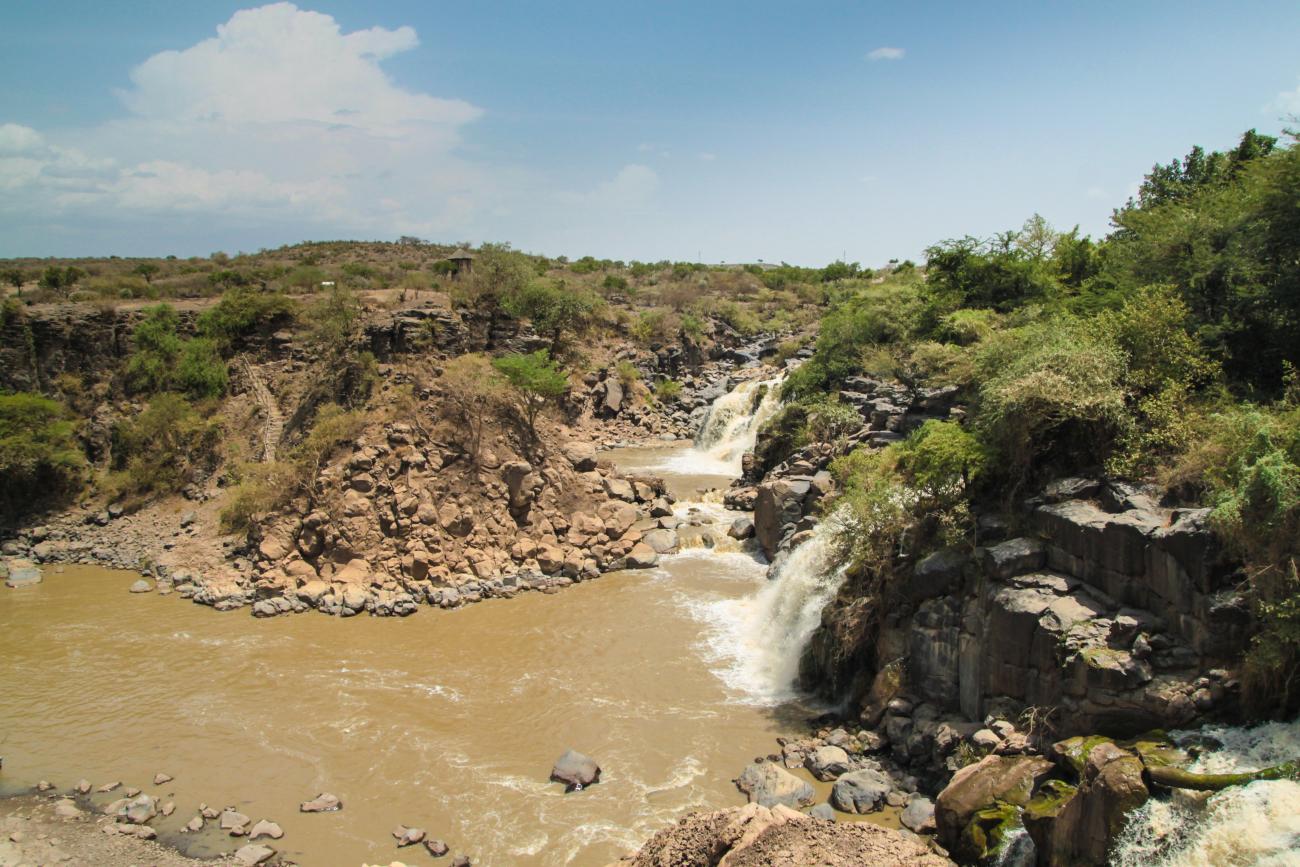
This scenic national park is situated in the dry acacia savanna of the Rift Valley some 200km from Addis Ababa. A magnificent 150m-deep gorge, carved by the Awash River, forms the southern boundary of the park, including a substantial waterfall. To the north, you'll see the ragged edges of Mount Fantelle, a dormant volcano whose crater towers above the surrounding bush.
Other highlights include the Filwoha Hot Springs, which feed a series of beautiful translucent blue pools and Lake Beseka. Although 80 mammal species have been recorded in Awash, the game viewing is less of an attraction than the scenery and birdlife. Awash National Park is regarded as one Ethiopia's top birding destinations, with over 450 species. Including the endemic yellow-throated serin and the Ethiopian cliff swallow.

This fascinating town was the centre of the Axumite Empire, one of the most important and technologically advanced civilisations of its time and a major force in world trade between the 1st and 7th centuries AD.
A further twist in the town's long history is speculation that it could have held the court of the Queen of Sheba and also that it is the final resting place of the Ark of the Covenant. Whatever the truth of these matters it is undoubtedly the holiest city of the Ethiopian Orthodox church and there is a startling wealth of antiquities both to be seen and as yet still undiscovered.
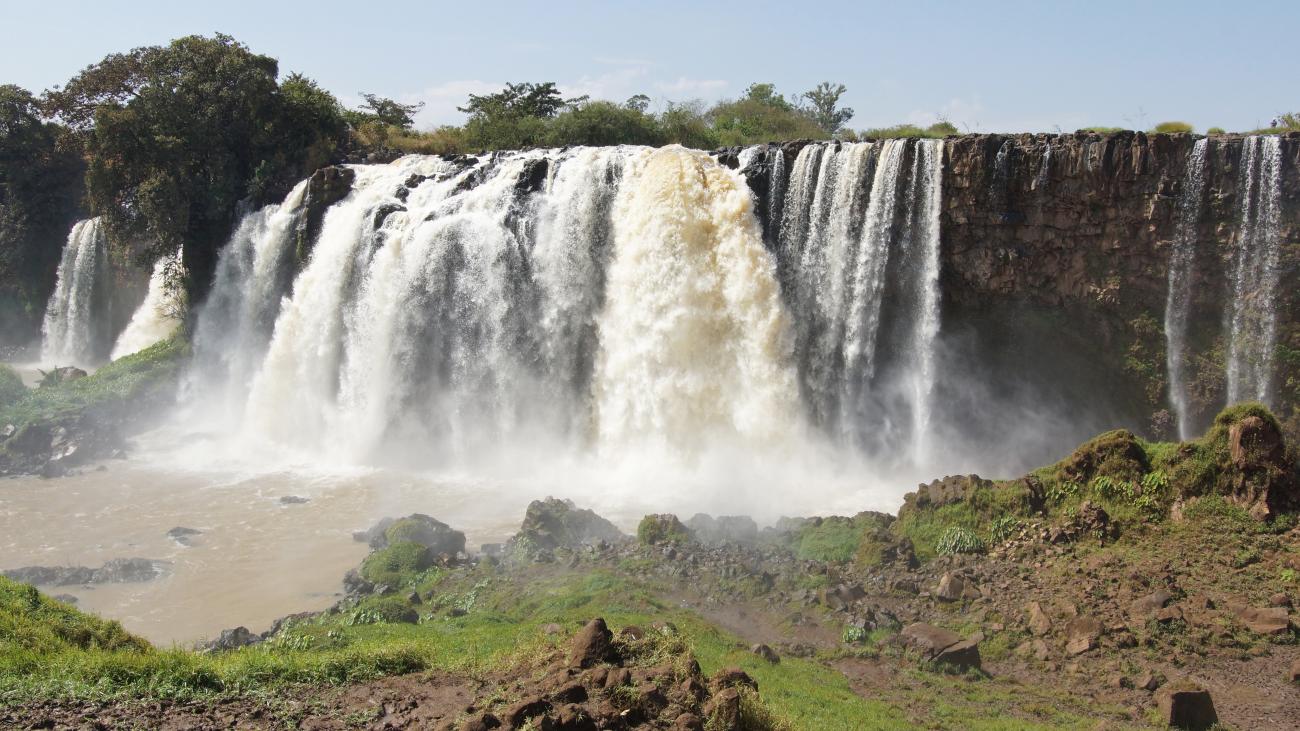
Bahir Dar, with its wide avenues of palms and scenic lakeside location, is one of Ethiopia's most attractive towns. Located on the southern shore of Lake Tana, it is an ideal base from which to explore the lake and surrounding area, which includes the blue nile falls.
Once no more than a sleepy fishing village it has grown in size during recent times and palm-lined avenues and lakeside vistas make it an attractive place to stay. There are good amenities for travellers and the town itself has become an important industrial centre partly as a result of the hydro-electric dam built at nearby Tis Abay.
Bale Mountains National Park
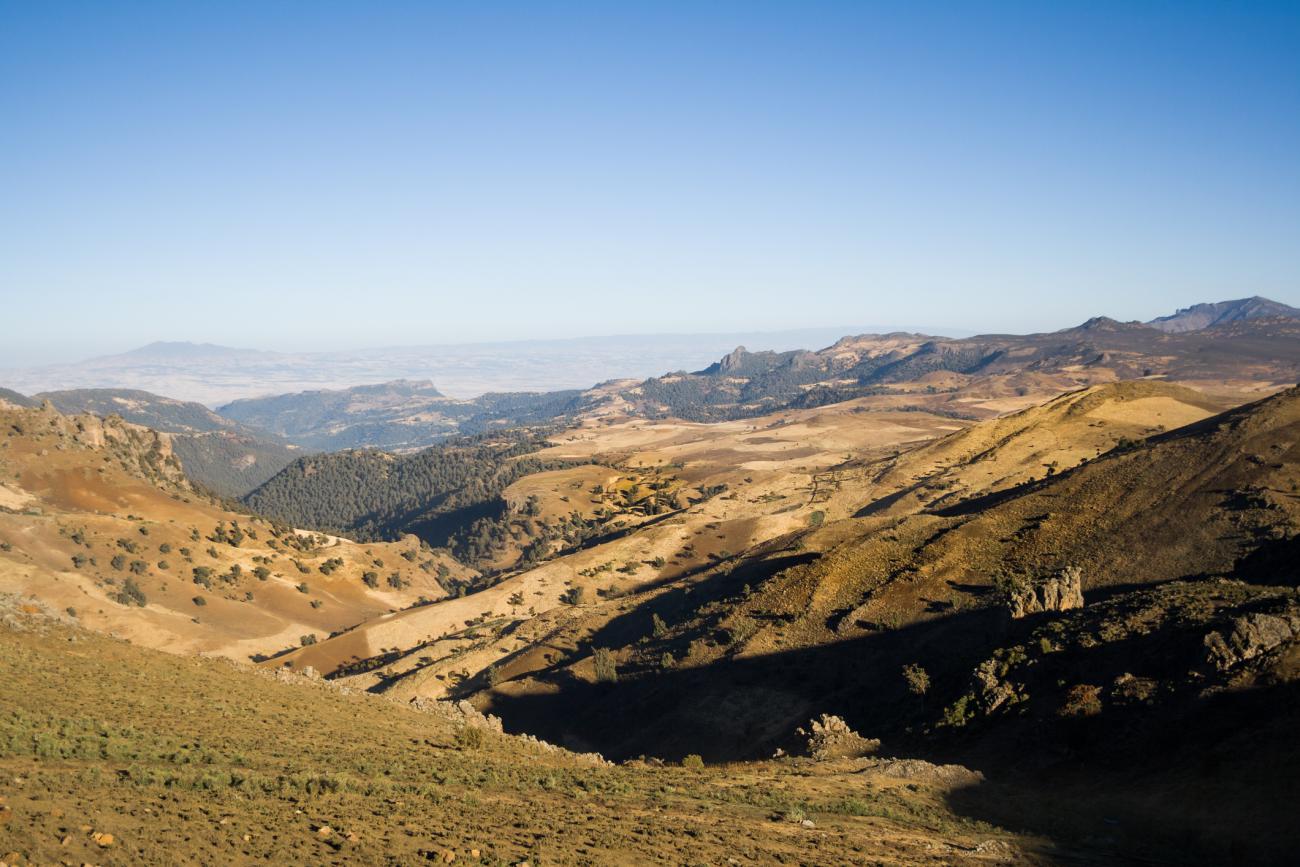
The Bale Mountains National Park is a protected area of approximately 2,200 km2 and is located around 400 km southeast of Addis Ababa. Its high mountains, sweeping valleys, dramatic escarpment and wide expanses of forests provide visitors with a diversity of vistas unique to the Ethiopian highlands.
UNESCO has estimated that more mammal species would become extinct were the habitats of the Bale Mountains to decline than if any other area of equivalent size on the globe were to disappear. When this is combined with rare amphibian species, endemic birds and spectacular flora, it is easy to see why the park is designated as a Biodiversity Hotspot by Conservation International.
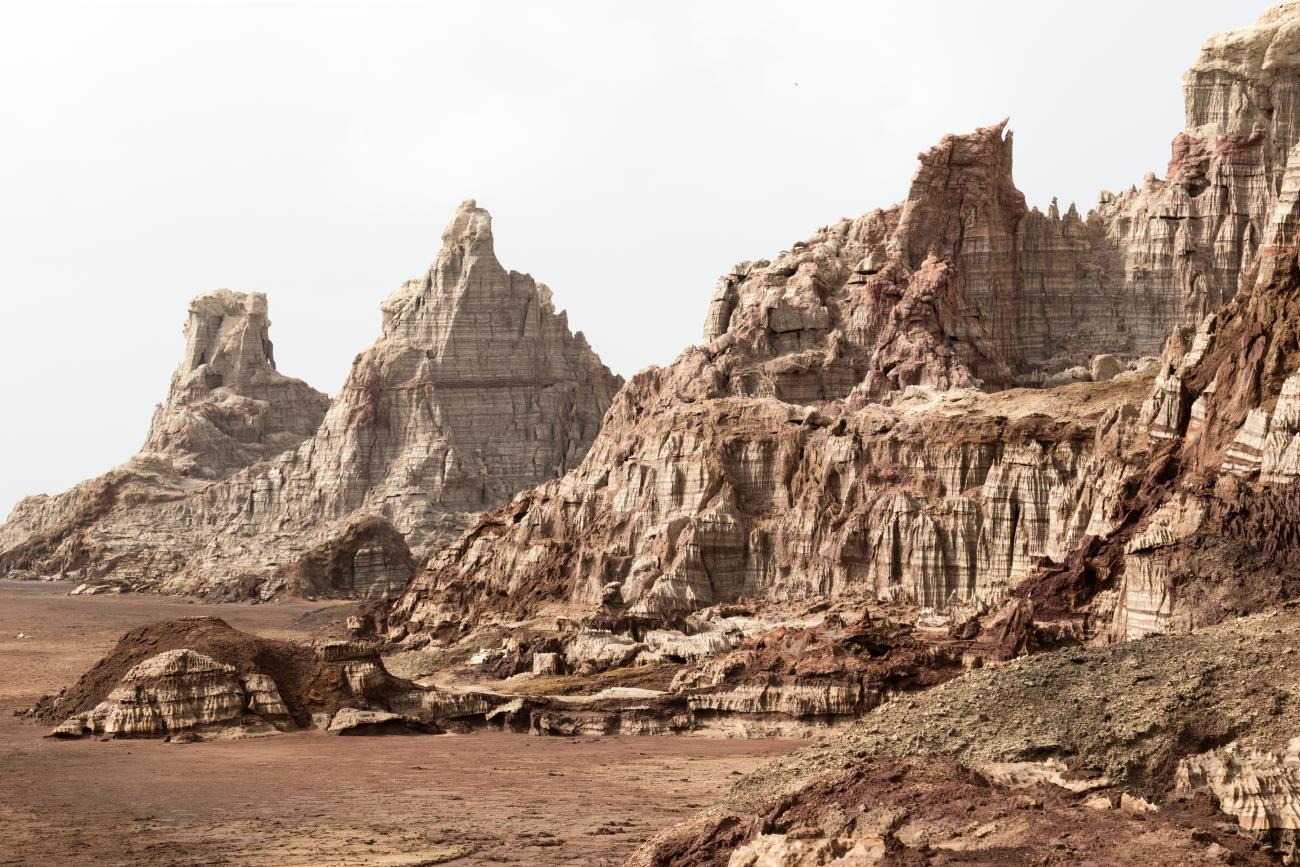
The Danakil Depression is found in Northern Ethiopia, close to the border with Eritrea. With parts of Danakil 100 metres below sea level, this is one of the lowest places on Earth and also one of the hottest in average yearly temperature. Access is difficult as the area is only passable for 4x4 vehicles and accommodation is scarce meaning visitors camp each night at fixed sites. Arguably one of the best places to visit in Ethiopia, those that do make the journey are rewarded with some of the most extraordinary landscapes anywhere on earth.
Two active volcanoes, Mount Ayalu and Erta Ale have large lava lakes, whilst the Dallol Sulphur Springs is a photographers' dream. The Awash River ends in a huge salt mine, where workers carve rough-hewn blocks of salt for sale, an extraordinary sight to behold.
.jpeg)
This unspoilt corner of North Eastern Tigray is scenically spectacular with vast spaghetti-western landscapes of flat dry plains and towering rock outcrops known as the Gheralta. The region is most famous for its 35 old rock-hewn churches, the largest concentration anywhere in Ethiopia. The finest are found in splendid isolation on the outcrops and involving a strenuous walk, and the magnificent views, atmospheric interiors and a wealth of old paintings and church treasures are very special indeed.
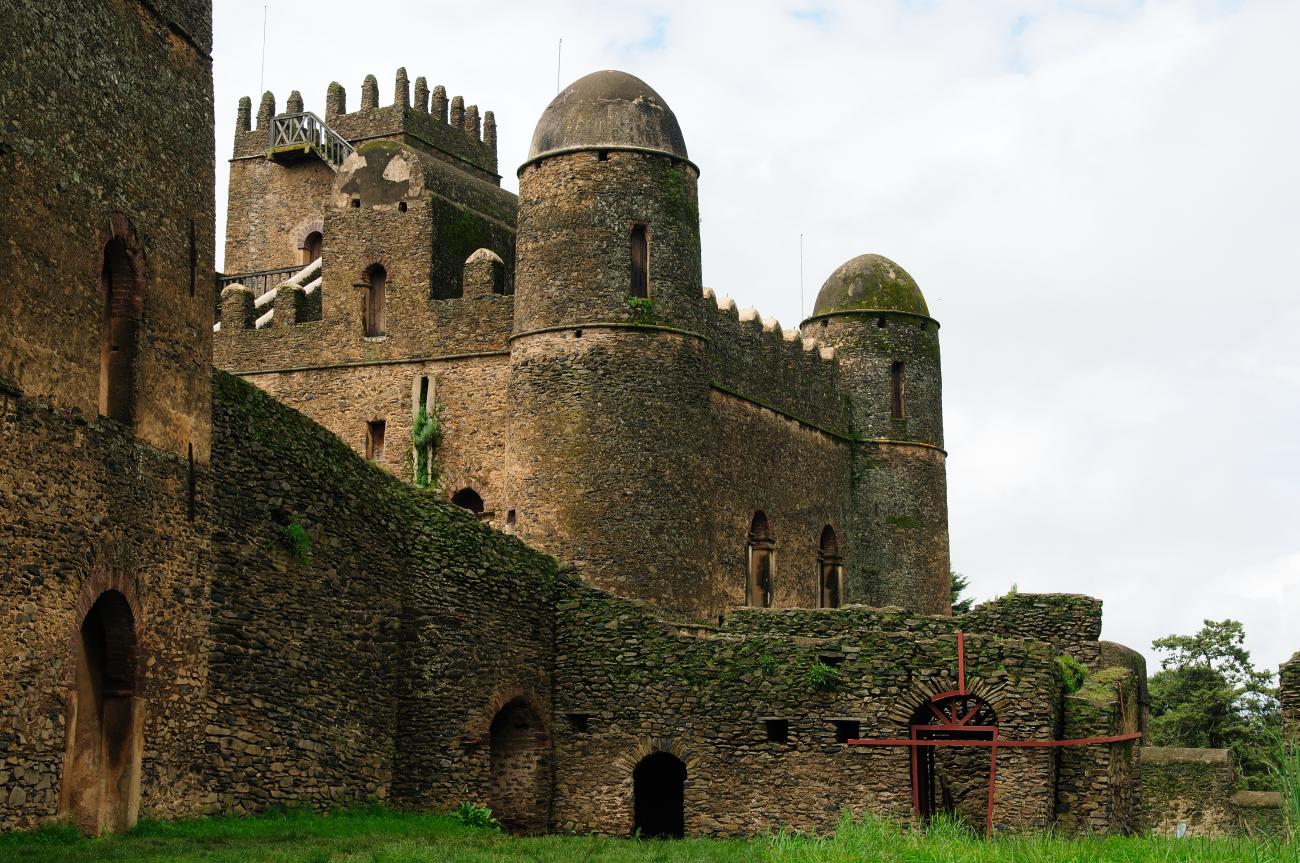
Up until the beginning of the 17th century, Ethiopia had what was locally referred to as a 'mobile capital'. But in 1632 Fasilidas took the throne and proclaimed Gonder as his capital, where it remained for the next 200 years. As king and emperor Fasilidas not only ushered in a period of relative calm in Abyssinia's turbulent history he also built a stupendous fort at this strategic location - added to by his successors - most of which is still intact. Wandering around the fort's spectacular turreted citadels, vast banqueting halls and bathhouses leaves you in no doubt whatsoever as to the importance of this Christian kingdom 400 years ago.
Danakil Depression
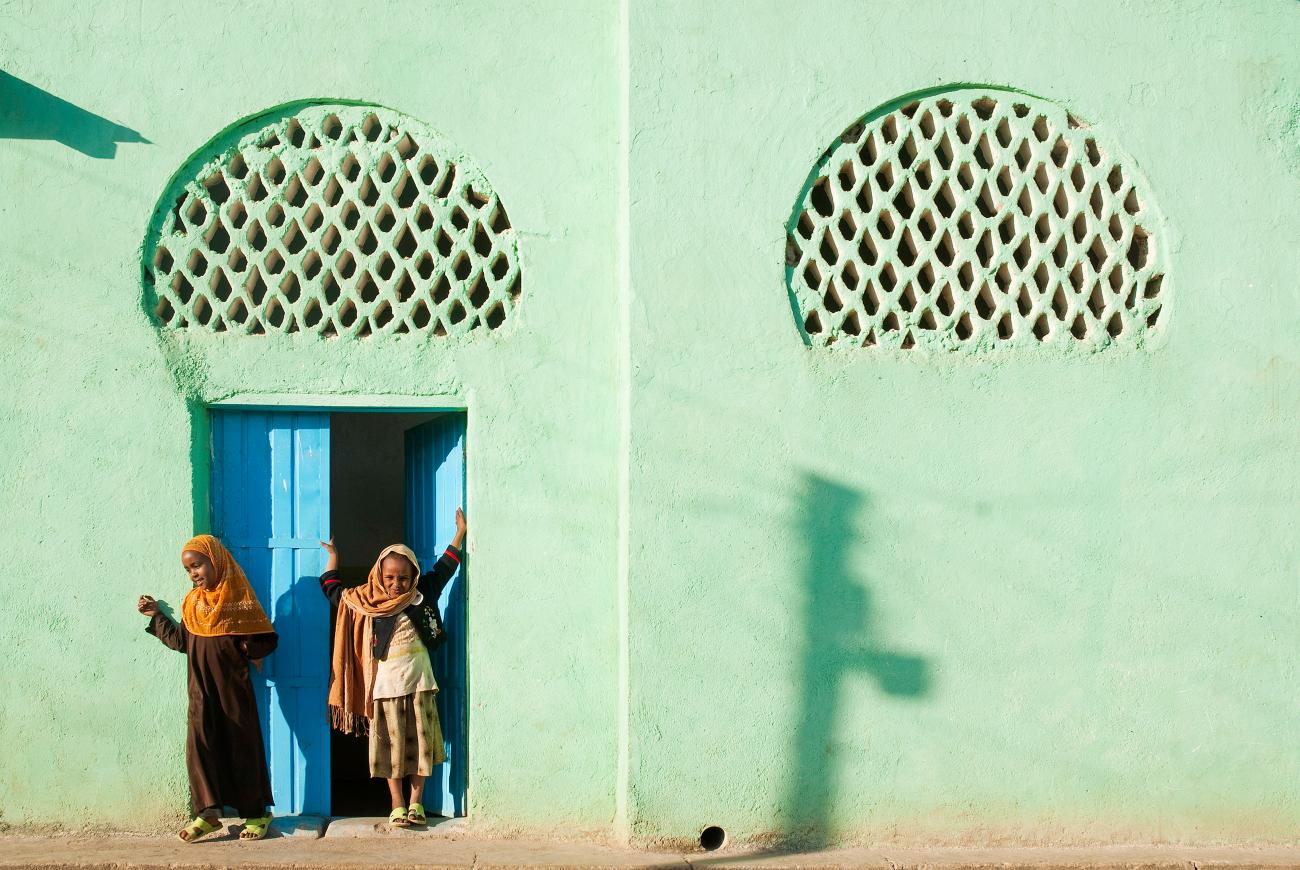
Harar is one of the most impressive of Ethiopia's historic sites, reflecting the long and colourful history of the country. Located in the East of Ethiopia, it was founded in the late first millennium BC and became a stronghold of Islam. Harar has been ruled by seventy-two successive Imams since its formation, through which time unique traditions have been born.
It is one of the main Muslim pilgrimages and has many fascinating sites including the old walled town which was established in the 1540's and contains 90 mosques. One of the town's ancient traditions has also become one of its main attractions; every day a selected resident goes out of the city and calls the Hyenas that live in the surrounding areas, only to feed them by hand.
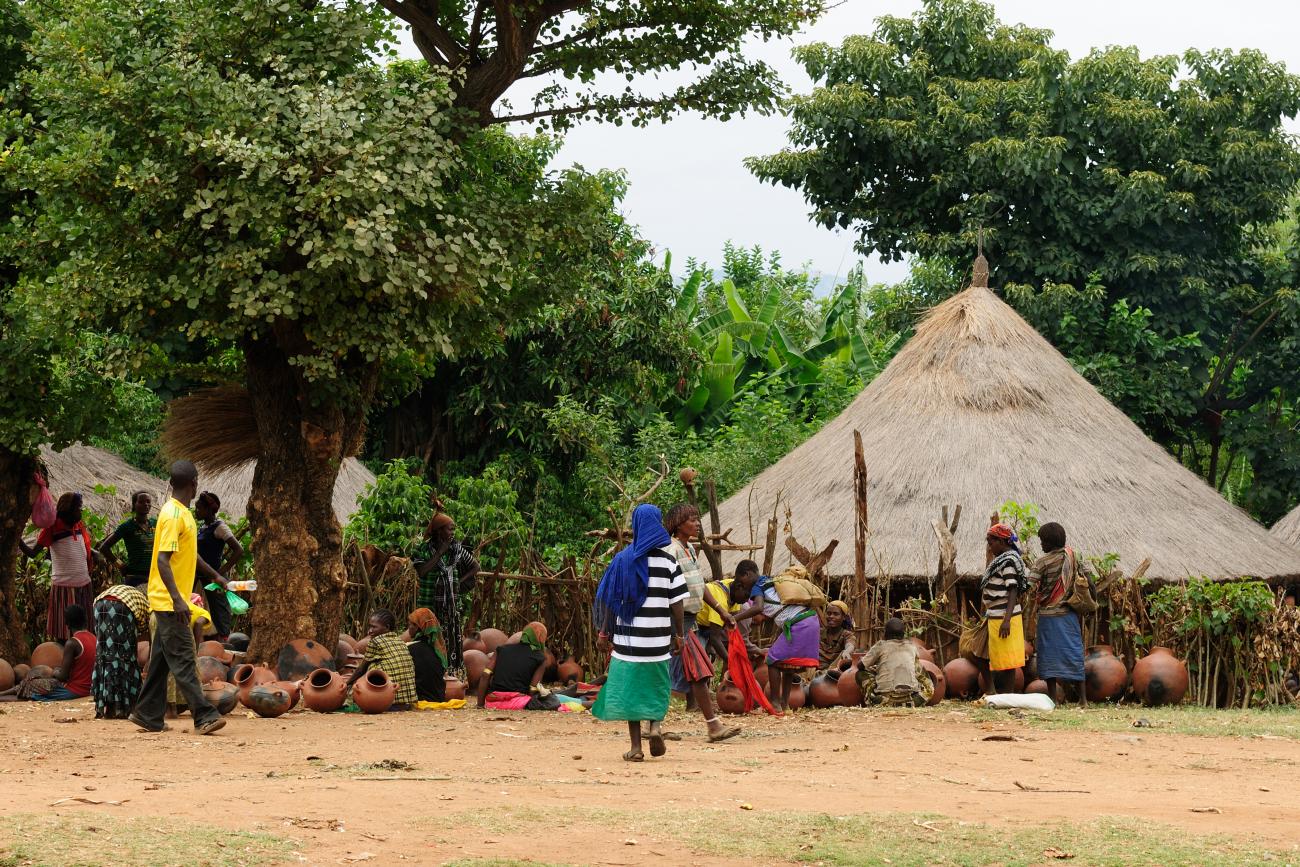
Although Jinka is the administrative capital of the South Omo zone it exists in almost isolation from the rest of the country and has a relaxed, rural feel. Set at an altitude of 1490m it is quite temperate and its Saturday market attracts traders from all over the area.
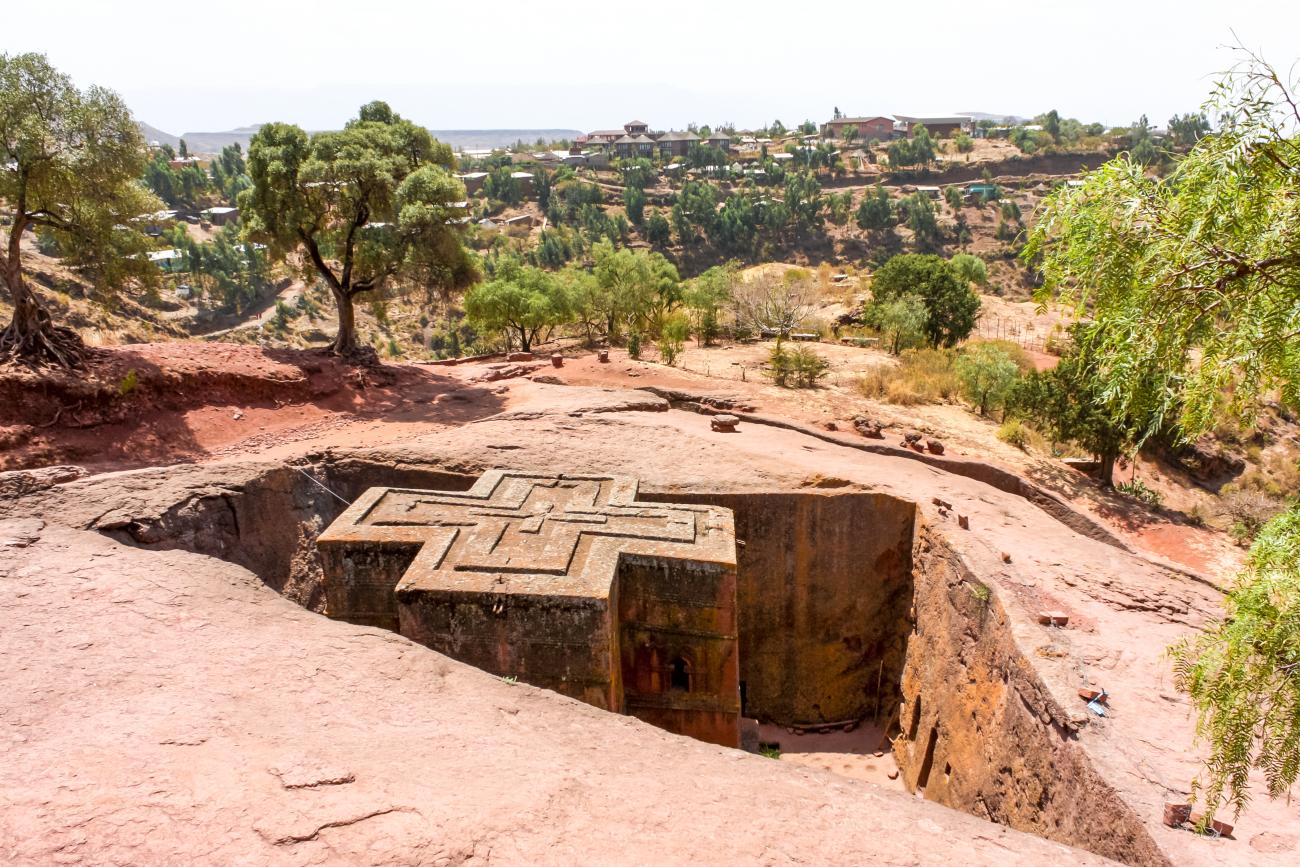
The isolated town of Lalibela, situated high up in the Lasta Mountains, is famous throughout the world for its incredible rock-hewn churches. At 2,630 m and perched among wild mountains, the setting is fantastic.
From the 10th to the mid-13th century it was the capital of the Zagwe Dynasty that ruled the country and it was under the direction of its most famous King, Lalibela, that the churches were carved. He gathered together the greatest craftsmen possible and some estimates think as many as 40,000 people were required to create the churches.
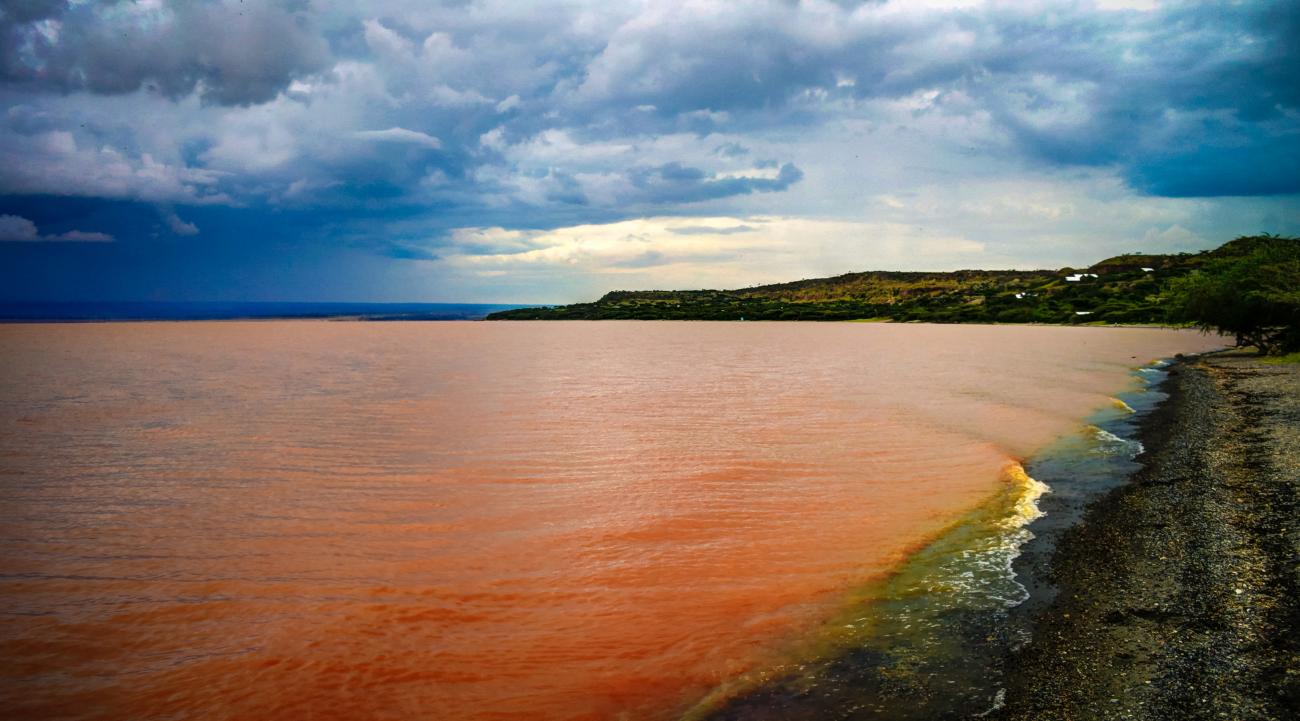
Of all the Rift Valley lakes, Lake Langano is the most developed for tourism, lying adjacent to the Abiata-Shals National Park that is dominated by the two lakes for which it is named. Lake Langano is 18 km long and 16 km wide and its soft brown waters are set against the blue backdrop of the Arsi Mountains, which soar to 4000 m. Although the area around the lake is largely deforested, a variety of wildlife live here including hippos, monkeys, baboons, warthogs, and a huge variety of birds.
Mago National Park
Mago National Park is bisected by the Mago River and is dominated by dense acacia woodland and patches of open savannah. Pristine rainforest lines the river and the highest peak is Mt. Mago at 2,528 m.
Over 100 mammal species live here and once the huge herds of buffalo roamed this area but numbers have dwindled dramatically. However, it is still possible to see elephants, Defassa waterbuck, Lelwel hartebeest, greater and lesser kudu and Guenther's dik-dik.
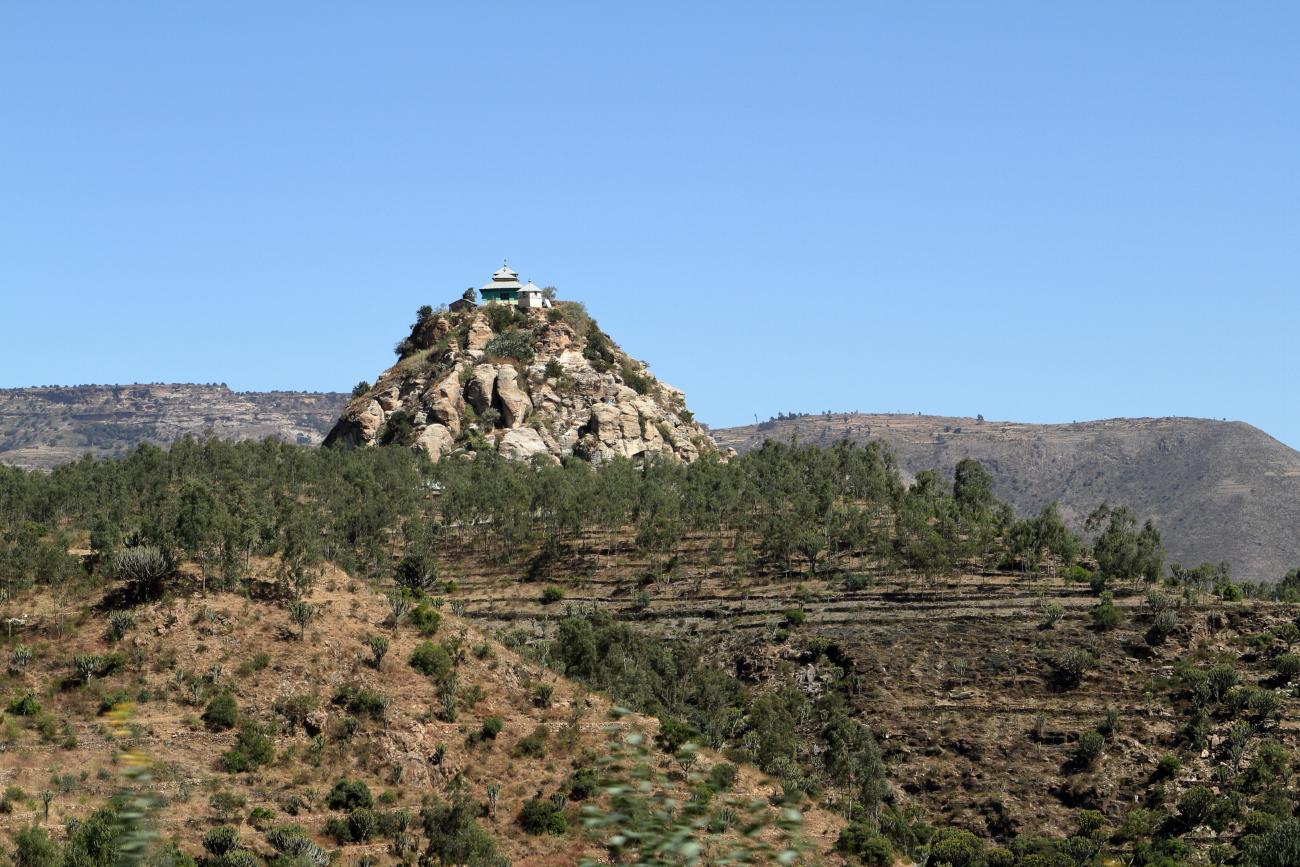
Founded by Emperor Yohannes IV in 1881, Mekele is the main and most modern city in the Northern region of Ethiopia and tourism infrastructure is better than in other parts of the country. Set in a basin at 2,200m in the rocky Tigraian Highlands, the city is clean, organised and vibrant. There are many excellent restaurants and it makes a good base from which to explore the surrounding area.
Two hours outside of Lalibela, Meket offers spectacular rural scenery. At over 2500 metres, the views from the escarpment are breathtaking and perfect for exploration on foot. It is here we arrange two to five-day community treks providing a remarkable insight into local Ethiopian life.
Nazret, also known as Adama, is the third-largest town in Ethiopia. Perched at an altitude of around 1,600m on the fertile plateau that divides the narrowest stretch of the Ethiopian Rift Valley from the central highlands. It is a laid back almost countrified town with a good range of restaurants and a number of local hotels. Whilst it has little of huge interest to tourists it provides a good stopping point between Awash and Addis Ababa or for those travelling South to the Bale Mountains.
Nechisar National Park
This is one of the most beautiful game reserves in Africa and the park protects the white grass plains and also parts of Lakes Chamo and Abaya. The park and lakes support a large number of different species of wildlife including hippo, crocodile, Burchell’s zebra, waterbuck, Grant’s gazelle and as usual a wide variety of birds. The terrain is varied too from savannah plains to groundwater forest where it is common to see vervet monkeys and baboons.
Simien Mountains
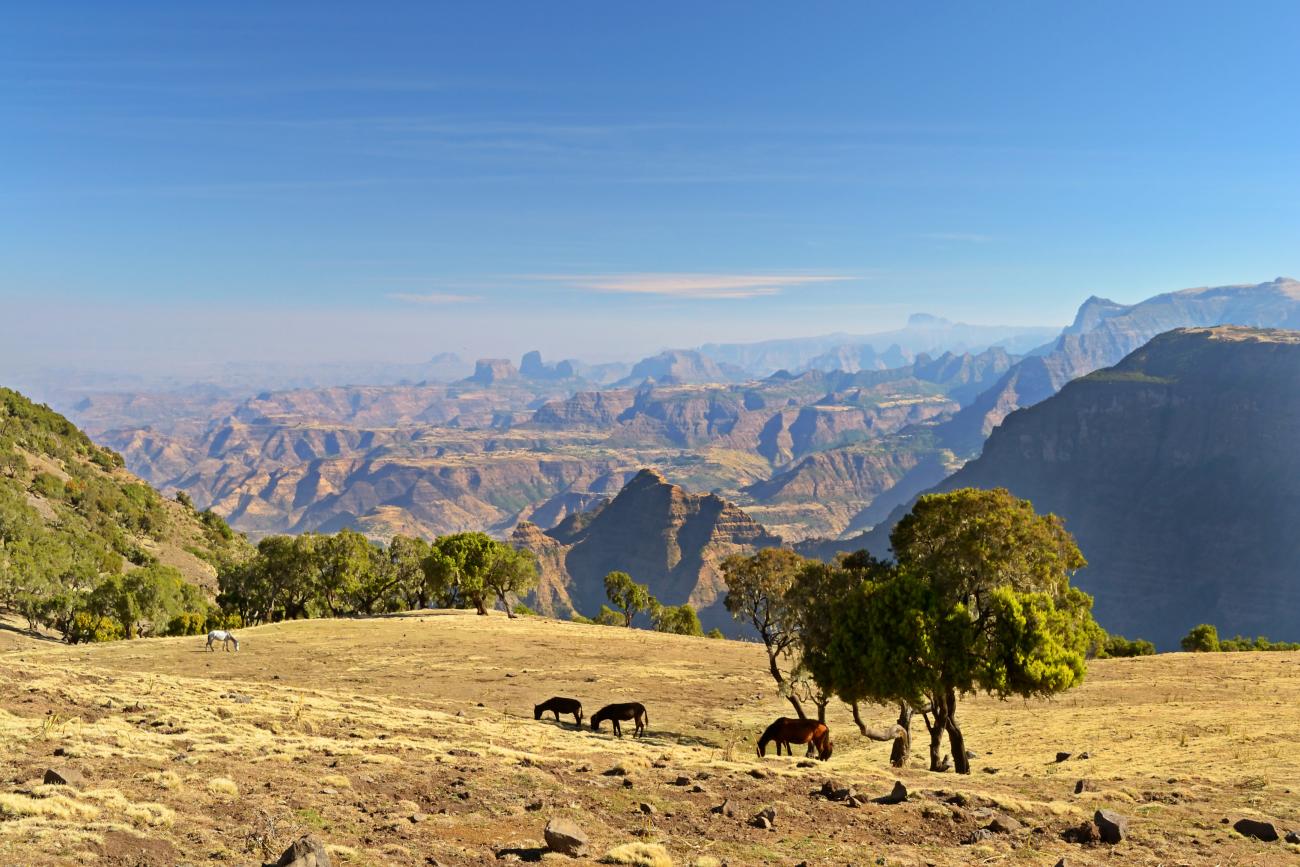
Climbing to an altitude of 4,620m, stretching 100 miles east to west, the Simien Mountains are one of the largest ranges in Africa. With their vaulting granite columns, towering escarpments and plummeting valleys, they are also among the most spectacular.
Besides the colourful Ahmaric tribes, the Simien Mountains are also home to a vast assortment of wildlife, where Gelada Baboons, the Simien fox, bushbuck and the magnificent Lammergeyer vulture can be found. But the wonder of the Simiens does not lie so much with the animals or the people that live there, it is simply to watch the sunrise or fall over a land that time forgot.
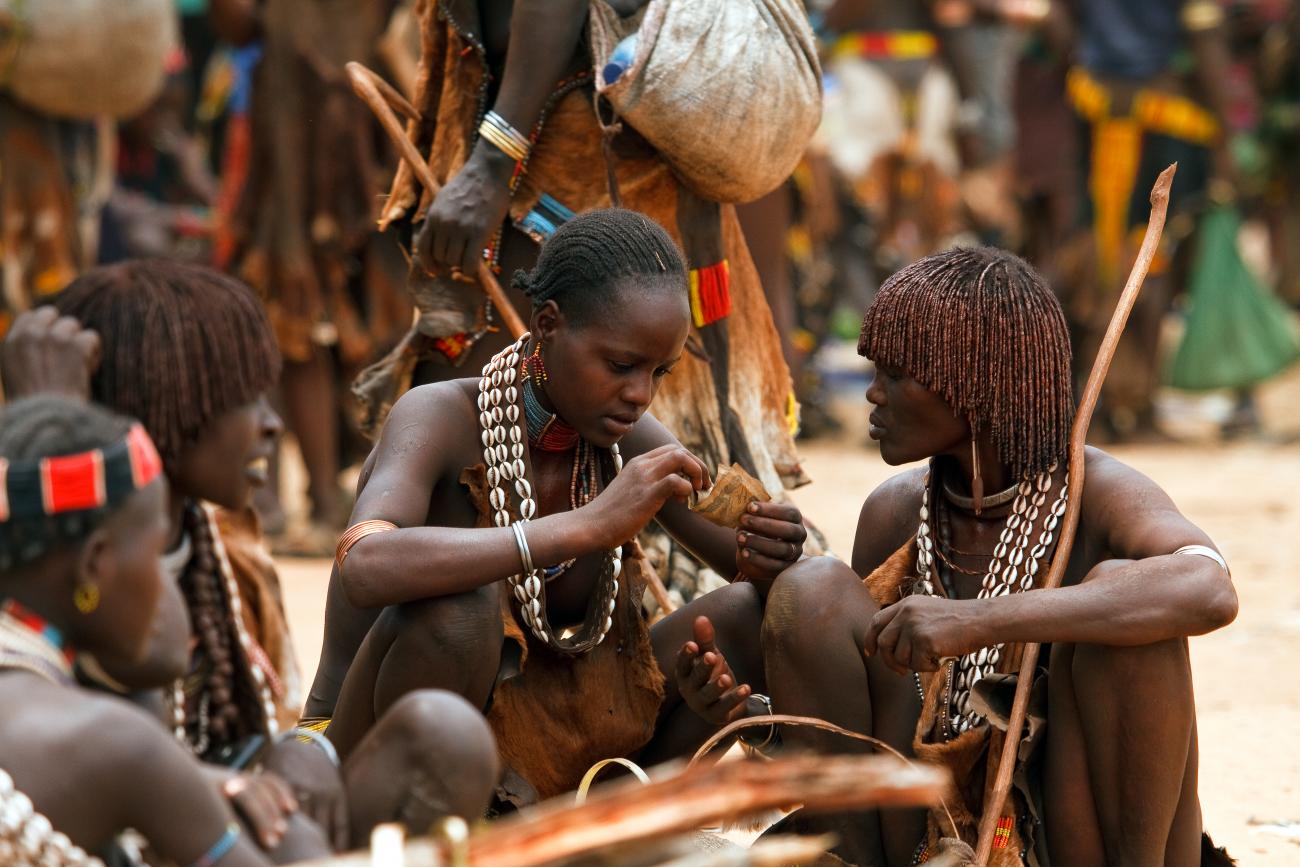
This traditional town, not far from the Kenyan border, lies right down in the heart of the south Omo region and is an important transport hub, located at a three-way road intersection. It is the main town of the Hamer people and is known throughout the Omo Valley for its colourful Monday market, one of the most important in Hamer country.
In southern Ethiopia, in the heart of a landscape dotted with wild coffee trees and enset (false-banana tree) plantations, sits the town of Yirga Alem. Just over 250 km from Addis Ababa, Yirga Alem is in itself somewhat unremarkable but is home to charming Aregash Lodge, a lovely place from which to explore this little-known part of the country, well away from the more popular, well-known circuits.
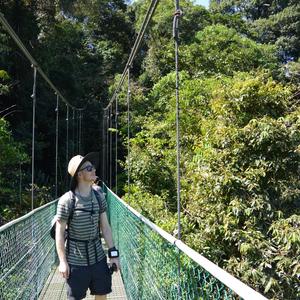
Harry Foskett
View harry foskett's latest blog posts, related tours.
- HOME Welcome!
- About Ethiopia
UNESCO World Heritage Sites
- Coffee in Ethiopia
- Travel Tips & Facts
- Addis Ababa & Surrounding
- Ethiopian Histrorical Attractions
- Ethiopian Natural Attractions
- Southern Cultural Route
- Ethiopian Festival Attractions
- Ethiopian National Parks
- Addis Ababa City & Day Tours
- Historical Tour Package
- Southern Cultural Tours
- Religious Festival Tours
- Bird watching Tours
- Short Weekend Tours
- Trekking Tour Package
- Danakil Depression Tours
- Tigray Rock Churches Tours
- Best Combination Tours
- Terms & Conditions
- Domestic Tourism
- Volunteer Tourism
- You are here:

Ethiopia’s immense cultural, historical, festivals, paleontological and natural wealth are reflected in its registered of Ten UNESCO World Heritage Sites, the most of any country in Africa. Eight of these ten sites are cultural, one festival of Meskel and one the Simien Mountains National Park is natural. Six other sites in Ethiopia are currently under consideration by UNESCO as Tentative World Heritage Sites.
Tentative List
In addition to sites inscribed on the World Heritage list, member states can maintain a list of tentative sites that they may consider for nomination. Nominations for the World Heritage list are only accepted if the site was previously listed on the tentative list. Ethiopia recorded six sites on its tentative list. The tentative lists are
- Bale Mountains National Park (2008)
- Dirre Sheik Hussein Religious, Cultural and Historical Site (2011)
- Holqa Sof Omar: Natural and Cultural Heritage (Sof Omar: Caves of Mystery) (2011)
- Gedeo Mixed Cultural and Natural Landscape (2012)
- Melka Kunture and Bachilt Archaeological Site (2012)
- Gada system, an indigenous democratic socio-political system of the Oromo people, the Representative List of the Intangible Cultural Heritage of Humanity (2016)
For Further reading regarding Ethiopian UNESCO registered site please click the link below
http://whc.unesco.org/en/statesparties/et
Attractions
Tour package.
To be leading tour Operation Company in the country by providing efficient and effective tour packages through unparallel service delivery.
SET Mission
To render an efficient, effective value for money competitive qualified tour operation service and profoundly contribute to the sustainable tourism development of the country.
Important Information
Special package, contact details.

- Birding Tours
- Camping & Glamping Tours
- Community based tourism
- Cultural & Historical Tours
- Halal Tours
- Hiking and Trekking Tours
- Photography Tours
- Sea and Beach Tours
- Special Interest Tours
- Stopover Tours
- Wildlife Tours
- Accommodation
- Charter Flight
- Tours and Excursions
- Virtual Travel Experience
- Introduction
- Anbessa’s Initiatives
- Certifications
- Anbessa’s Future Plan
- About Anbessa
Take advantage of the search to browse through the World Heritage Centre information.
Share on social media
Unesco social media, world heritage list.
- Rock-Hewn Churches, Lalibela
- Simien National Park
- Fasil Ghebbi, Gondar Region
- Lower Valley of the Awash
- Lower Valley of the Omo
- Harar Jugol, the Fortified Historic Town
- Konso Cultural Landscape
- Bale Mountains National Park
- The Gedeo Cultural Landscape
- Lake Turkana National Parks
The Nomination files produced by the States Parties are published by the World Heritage Centre at its website and/or in working documents in order to ensure transparency, access to information and to facilitate the preparations of comparative analysis by other nominating States Parties.
The sole responsibility for the content of each Nomination file lies with the State Party concerned. The publication of the Nomination file does not imply the expression of any opinion whatsoever of the World Heritage Committee or of the Secretariat of UNESCO concerning the history or legal status of any country, territory, city or area or of its boundaries.
World Heritage Online Map Platform
The World Heritage Online Map Platform, supported by the Flanders UNESCO Trustfund (FUT), is a pilot online geographic information system displaying georeferenced maps of World Heritage properties and buffer zones.
Official World Heritage List in other formats
Official World Heritage List Statistics
Order World Heritage List Wall Map
A large format full-colour map is available in English, French and Spanish . The dimensions of the map are 78cm by 50cm (31 in. by 20 in.).
- +251 911 510 881
- [email protected]

List of UNESCO
On the world heritage list of unesco, ethiopian travel agency timeless ethiopia arranges trips to each of these destinations..
The origins of the Kingdom of Axum in 5th century BC are most frequently accepted as the event commencing the history of Ethiopia. In the times of its greatest prosperity, the Kingdom was maintaining political and commercial contacts with the civilizations of Greeks and Romans, and also with India and China. In the times of Kingdom of Axum, the Geez language became an official one – until today, it has been in use in the churches of Ethiopia. This language originates from the Southern-Arabian peoples who reached these lands on their way from Yemen a long time before the establishing of the Kingdom of Axum. In Axum, it is possible to admire the masterpieces of architecture, for instance, famous steles, until today having been the inspiration for the designers of modern edifices. A short time ago, the stele looted during the Italian occupation returned to the city. Axum had been the venue of coronations for Ethiopian emperors until as recently as the times of Haile Sellasie. In a special chapel next to Tsion Marjam (the Holiest Mother of God on Zion) Cathedral, the legendary Arc of the Covenant is stored. In accordance with a legend, it is from here that the Queen of Sheba departed in order to meet King Solomon. The ruins of her palace and enormous water basins, contemporarily serving as the reservoir of fresh water, have been preserved.
Tour to Ethiopia -Historic Route
THE VALLEY OF THE RIVER AWASH
This is one of the most important paleontological sites in Africa. The remains which were discovered here, and the oldest of which are at least 4 million years old, have provided the evidence for the evolution of man which has altered the conception of the development of mankind. The greatest discovery was made in the year 1974, when, upon the basis of fifty-two fragments of a skeleton, the famous „Lucy” was reconstructed. This region is inhabited by the nomadic tribes of the Afar people. Some of these tribes, like it was the case thousands of years ago, have as their means of subsistence excavating the lumps of salt from the bottoms of dried-out lakes. These lumps are then transported on the backs of camels further inland on the territory of their country.
THE VALLEY OF THE RIVER OMO
The Valley of the River Omo in the vicinity of Lake Turkana is a prehistoric site on which the remains of fossil hominids (among others, of Homo gracilis), being of a major importance for research on the evolution of man, have been found. And even though that fact came to be the reason to include the Valley on the list of UNESCO, in a matter of fact it attracts tourists with the beauty of its landscapes and the possibility of contacting the tribes inhabiting its lands. There are more than 20 of such tribes, and they represent four groups of languages. The most numerous ones are the Hamar people, whereas the most famous one is the Mursi, in whose case women place large clay rings upon their lower lips. One needs to travel to these parts as soon as it is possible for them. Investments, in particular the construction of water dams and sugar refineries are altering the character of the South of Ethiopia in an irreversible manner.
South Ethiopia Tour Omo Valley Tribes
FASIL GHEBBI IN GONDAR
In 16–17th century, this fortified city used to be the residential town of Emperor Fasilides of Ethiopia and his successors. It is surrounded by the walls the length of which amounts to 900 meters, and inside them palaces, churches, monasteries, public utility buildings and private houses can be found. All of them have been erected in a unique style, combining Indian and Arabian influences with the Baroque ones brought here by missionaries – the Jesuit fathers. The majority of the churches in Gondar were fallen in victim to destruction during the invasion of the followers of Mahdi from Sudan. This period of history was described for us in more detail by Henryk Sienkiewicz in his novel „In Desert and Wilderness”. Among the surviving churches, the one which is particularly enchanting is the church of Debre Birhan Selassie, decorated with the fresco paintings of outstanding beauty. In Gondar, what is worth seeing is Fasilides Baths, situated approximately 2 kilometers from the center. This two-storey building, situated on the bottom of a pool, dug-out in the ground, was probably the residence of Emperor. The entire edifice is surrounded by a wall made of stones. Gondar is a traditional starting point for excursions into the most popular trekking region in Ethiopia, the Simien Mountains.
North and South Ethiopia Tour
HARAR JEGOL
Surrounded by the desert and savannah, the fortified city of Harar is situated on the plateau, cross-sectioned by deep gullies. It is known as the fourth holy city of Islam. In it, 82 mosques (out of which number, three date back from 10th century) and 102 houses of prayer have been erected. In 13–16th centuries, the city was provided with walls surrounding it. The majority of the houses in it are one-storey, three-room buildings with a yard set aside for the purposes of house-keeping. Another type of homesteads, called the Indian type, is represented by the buildings erected by Indian merchants at the end of 19th century. These houses are rectangular, two-storey buildings with a veranda moved forward into the yard or the street. The third type is the combination of the two previously mentioned. The architecture of the city is an exceptional one, and unlike what can be seen anywhere else, whether in Ethiopia itself or in other Muslim cities. Its current outside appearance was permanently formed in 16th century, and is characterized by the labyrinth of narrow streets, along which the high facades of houses can be seen. In the years 1520–1568, the city became the capital of the Kingdom of Harar. In 16–19th centuries, it was a center of commerce and teaching Quran. In 17th century, together with its adjacent areas, it became an independent emirate. In the course of the further ten years, Egypt occupied it, and in the year 1877 was incorporated into Ethiopia. The city is a well-known center of artistic artisanship – weaving, basketry and book-binding, and also the exceptional conception of the interior design of houses.
Trip to Harar
ROCK CHURCHES IN LALIBELA
After the fall of the Kingdom of Axum, the kings from the Zagwe dynasty transferred their residence to Lalibela, the south-east of Axum. There, they erected a flourishing and densely populated capital city, the residence of their Middle Age dynasty. Lalibela, previously known as Roha, was called in this manner to commemorate the King of Lalibela from the end of 12th century. The city was established as New Jerusalem. In that historical period, travelling on pilgrimages to proper Jerusalem was impossible, because the lands between Jerusalem and Ethiopia had been conquered by Muslims. The churches of Lalibela leave no one disinterested. These intriguing edifices have in their entirety been forged out in a homogeneous lump of red volcanic tuff. They seem to be absolutely unreal and created by some kind of a superhuman power. Rock temples might be admired in different places in the world, but it is solely here that not only the internal space, but also facades and external walls have been forged out. The churches of Lalibela are referred to as the least known of the eight miracles of the world, and they full deserve that name. The buildings are in their entirety forged out in rock, and simultaneously, completely separated from that. In the subsequent centuries, Lalibela was gradually decreasing in importance, so as to become a small village. For those unaware of its existence, this place situated at the foothills of the mountain called Abuna Yosef, which is practically inaccessible. It is only approaching rock church really close that makes it possible to judge exceptional character. Monolithic Saint George’s Church, having the characteristic shape of the Greek cross, evokes admiration. The largest church is Bet Medhane Alem, and it is 33 meter long, 23 meter wide and 11.5 meter high. The king of Lalibela employed 40 thousands of workers to excavate it. A legend has it that the workers were labouring throughout a day, and at night their work was continued by Angels with doubled strength. Why were these churches not erected of stone, in a more ordinary manner? The answer to this question has remained unknown until today. One of the hypotheses claims that such a manner of constructing safeguarded them against ending up destroyed in the case of the invasion of enemies. New Jerusalem does not offer only rock churches, but also underground dark corridors, on which the footsteps of deacons are still to be heard…,” seeing is believing”!
- Read more about Lalibela
- Photos from a trip to Lalibela
- Travel to Ethiopia. Historic Route & Lalibela Tour
THE CULTURAL LANDSCAPE OF KONSO
This area, situated on a dry plateau, is inhabited by the people called Konso, who have developed an unique and complex culture. The community is composed of the nine clans of Kafa, each of which has its own leader. They play a decisive role in resolving conflicts, in particular in the case of it being necessary to declare a war. Neighbouring hills are covered by terraces ensuring taking maximum advantage of the potential of rocky slopes. Konso use crop rotation and fertilizing the land with the excrements of animals. They live in intensively-urbanized settlements, situated on the tops of hills and surrounded by several circles of stone walls. The outside appearance of their villages is appealing and tidy, similarly to that of their inhabitants. The women of Konso wear characteristic stripped skirts, resembling those known from the area around the Polish town of ?owicz. In every fortified village, there is a public utility place, called Mora. It is there those political disputes, the meetings of courts, wedding ceremonies and harvest festivals take place. On the area of each and every Mora, a house designated for use by young men is situated. They sleep in it, in order to facilitate rapid mobilization in the case of the threat of fire or the attack of enemies. It is also there that Olahita, a collection of generation-marking poles, is to be found. Every 18 years, one pole is added; counting them, it is easy to determine the age of the village. Another unique tradition is that of a wooden stele, called Waka. These were usually erected on the graves of the leaders of clans and heroes. Those who were merited for the defense of the village, and also hunters who overpowered a lion, panther or an African buffalo, became heroes.
Konso can be visited on the way to Omo Valley.
THE NATIONAL PARK OF SEMIEN MOUNTAINS
Called „African Tibet” or „the Roof of the Black Continent”, the Semien Mountains are one of the most beautiful, and still remaining intact, mountain ranges of the continent. The long-time processes of erosion have formed one of the most spectacular landscapes of the world on Ethiopian plateau. It is made different by the jagged mountain tops, valleys and precipices (the depth of which amounts to maximum 1500 meters). The highest mountain top, Ras Dashen (4620 meter above the sea level), is the fourth highest in Africa, after Kilimanjaro, Kenya and Ruwenzori on the border of the Congo and Uganda. Further 12 peaks are higher than 4000 meter above the sea level The Park is mainstay of the rare species of animals. Gelada baboons graze here in groups the headcount in which reaches even as many as several hundreds of specimens. One needs to be more fortunate to meet kaberu; that is the name of the Ethiopian wolf, also called the Abyssinian fox. The surviving group of the specimen of this species is very small. Although it lives in packs, like a wolf, it hunts alone like a fox. The walia ibex (Walia ibex), having twisted horns and living nowhere elsewhere, then in the Semien Mountains, used to be a species on the verge of extinction.
It is situated south of Addis Ababa next to the road to Butajira. This is one of the most important, out of 160, archaeological sites, discovered thus far in the region of Soddo. More than 40 stone obelisks, among which the sculpted steles covered with motives resembling, among others, swords, ensete, which means a kind of banana tree, cultivated in Ethiopia, and also other symbols, the meaning of which remains unknown to us, can be found there. In accordance with the most recent research, the stones mark the places of burial dating back from the time 700 years ago. Women and men, who have been laid to eternal rest there, were buried in the embryonic position. One of the more interesting steles can be admired in Addis Ababa on the area of the university.
Day tour to Melka Kunture, Adadi Mariam and Tiya
BALE MOUNTAINS NATIONAL PARK
A Tapestry of Natural Splendor In the heart of Ethiopia, the Bale Mountains National Park stands as a sanctuary, preserving a tapestry of natural splendor woven by the confluence of primeval lava flows, the sculpting hand of glaciation, and the chiseling effect of the Great Rift Valley. This terrain boasts an assemblage of volcanic summits and ridges, stark escarpments, expansive valleys, frozen glacial tarns, verdant woodlands, profound ravines, and a myriad of cascades, all contributing to its unparalleled natural allure. This domain is a cradle for a mosaic of life, encompassing an array of biodiversity at the levels of ecosystems, species, and genetics. Quintessentially, it is the birthplace of five pivotal rivers, deemed essential in provisioning aqua and sustaining the livelihoods of multitudes in Ethiopia and beyond.
THE GEDEO CULTURAL LANDSCAPE
Nestled along the eastern verge of the Main Ethiopian Rift, amidst the precipitous contours of the Ethiopian highlands, the Gedeo Cultural Landscape unfolds. This expanse, a bastion of agroforestry, engages in a multilayered cultivation method. Here, towering arboreals provide a canopy for the indigenous enset, a staple sustenance, beneath which coffee and assorted shrubberies flourish. The Gedeo people, densely settled in this domain, are the custodians of ancient wisdom that underpins the local forest management. Within these nurtured mountain slopes lie sacred groves, entwined with the spiritual practices of the Gedeo community. The mountain ridges are adorned with dense clusters of megalithic monuments, esteemed and meticulously preserved by Gedeo elders, embodying the spiritual and cultural ethos of the landscape.
Related Posts
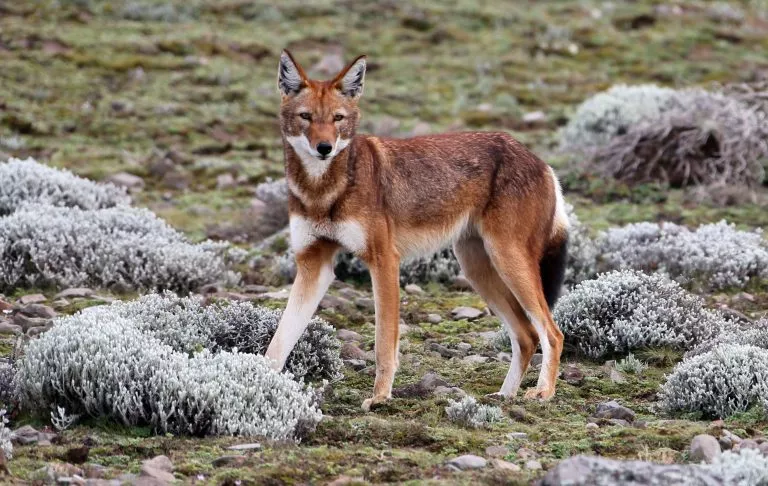
Two Additional Ethiopian Treasures Join UNESCO’s World Heritage List
Ethiopia’s Bale Mountains National Park and the Gedeo Cultural Landscape have recently been honored with inclusion on UNESCO’s World Heritage List.
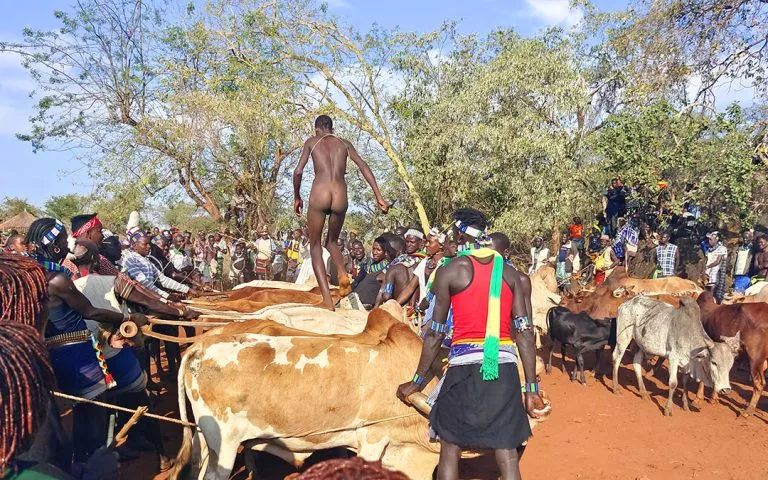
Ethnical Groups – Hamar Tribe
Stepping into the world of the Hamar Tribe is akin to opening a vibrant and intricate cultural treasure box. This Ethiopian ethnical group is one
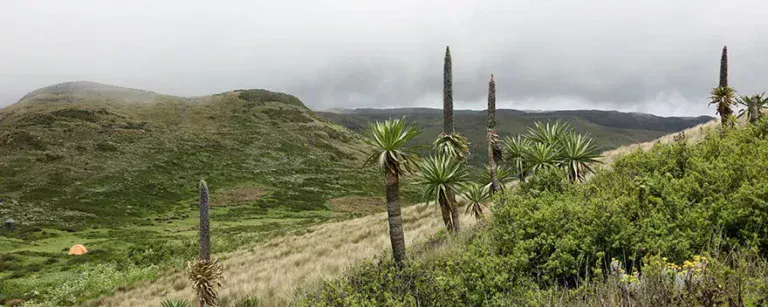
Guassa Plateau Tours
In order to reach the Guassa plateau from the Ethiopian capital, Addis Ababa, you have to travel approx. 260 km. A paved and then ground
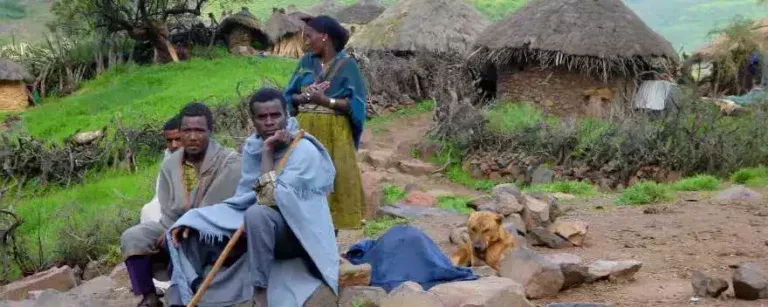
Siemen Mountains Trekking Route – 6 days
TET 006 TREKKING ROUTE – 6 days Transportation: Surface with (4×4,Mini bus, or Bus) Duration: 6 Days Day 1: Arrive Addis Ababa at Bole International Airport
Ethiopia Travel
- Best Selling Tours
- Fixed Departure tours
- Sustainability Policy
Ethiopia Trip
- Coffee and Tea Tours: Ethiopia
- Experience Ethiopia’s finest world heritage sites
- Danakil Depression & Harar Trip
- Tour Omo Valley Tribes
- Birding Tours
- Business Travel Ethiopia
- The Historic Route
- Explore Endemic Mammals, Birds, and Vegetations
Tours to Ethiopia
Bird watching holidays in Ethiopia, Trekking / walking vacations, Adventure holidays, Off-road Safari, Camping Expeditions to Ethiopia, Photography safari, Historical holidays, Cultural holidays (Festival, cermonies, events), Ecological tours, Biblical holidays, Arrangement for documentary films, Special interest holidays, Hotel bookings, Car rentals.

Ethiopian Travel Agency Timeless Ethiopia Touring Ptv.Ltd.Co.
Nifas Silk Lafto Sub city, Wereda 09 Saris Addisu Seffer, Heyday Hotel
- Addis Ababa, Ethiopia
- +251 114 709 089
- +251 114 70 7994
Copyright © 2023 Timeless Ethiopia: Tours & Travel Agency. All Rights Reserved. Timeless Ethiopia tour operator one of best Africa Travel Agencies is staffed with experienced travel professionals and equipped with knowledge and transport fleets. We are organizing Ethiopia trips and group adventure tours. Discover best travel agency.
Website designed by Lizardo Agency
- Sports & Recreation ›
Art & Culture
World Heritage sites in Ethiopia 2022, by type
Number of unesco world heritage sites in ethiopia as of 2022, by type.
Additional Information
Show sources information Show publisher information Use Ask Statista Research Service
The source does not specify the publication date. The release date is the date of access.
Other statistics on the topic
Number of national treasures South Korea 1996-2022
Number of paying visitors to Yangdong Folk Village South Korea 2013-2022
Number of registered cultural heritage properties South Korea 2010-2023
Number of UNESCO world heritage South Korea 2001-2023

- Immediate access to statistics, forecasts & reports
- Usage and publication rights
- Download in various formats
You only have access to basic statistics.
- Instant access to 1m statistics
- Download in XLS, PDF & PNG format
- Detailed references
Business Solutions including all features.
Other statistics that may interest you
- UNESCO World Heritage Sites in Europe 2023, by country
- Cultural heritage websites: reasons for visiting in England in 2017/18
- Charitable donation giving to the arts in England 2010-2020
- Charitable giving to arts, culture and sports sectors in England 2010-2019, by area
- Heritage-based tourism economy impact in the United Kingdom (UK) 2011
- Number of visits to Edinburgh Castle in Scotland 2010-2023
- Number of visits to Stonehenge in England 2010-2023
- Number of visitors to English Heritage sites 2011-2023
- Value added of the historical and artistic heritage industry in Italy 2019-2022
- Monuments on the UNESCO world heritage list 2023, by type
- Number of Latin American and Caribbean World Heritage Sites 2022, by country
- Countries with the largest number of World Heritage natural sites worldwide 2014
- Number of foreign visitors to Guwahati circle monuments India FY 2022
- Number of cultural historical buildings in Norway 2019, by county
- Main reasons for foreign culture tourists to travel to big cities in Denmark 2017
- Tourism share of GDP in El Salvador 2019-2021
- Macao's revenue from international tourism 2010-2020
- International visitors in Zanzibar 2015-2021
- Contribution of tourism to GDP in Canada 2000-2020, by industry
- International tourism spending in Panama 2016-2022
- Number of international tourist arrivals in selected African countries 2019-2022
- African countries with the largest international tourism receipts 2022
- Share of domestic and international tourist expenditure in Morocco 2019-2021
- Number of tourist arrivals in Egypt 2012-2018, by month
- Number of German tourist arrivals in Egypt 2012-2017, by month
- Number of Russian tourist arrivals in Egypt 2012-2017, by month
- Share of travel trips in Egypt by destination 2018
- Leading travel companies that comes to mind in Egypt by brand 2018
- Share of online travel searches in Egypt by device 2018
- Share of travel destination evaluation In Egypt by transportation factors 2018
Other statistics that may interest you Statistics on
About the industry
- Basic Statistic UNESCO World Heritage Sites in Europe 2023, by country
- Premium Statistic Cultural heritage websites: reasons for visiting in England in 2017/18
- Premium Statistic Charitable donation giving to the arts in England 2010-2020
- Premium Statistic Charitable giving to arts, culture and sports sectors in England 2010-2019, by area
- Basic Statistic Heritage-based tourism economy impact in the United Kingdom (UK) 2011
- Premium Statistic Number of visits to Edinburgh Castle in Scotland 2010-2023
- Premium Statistic Number of visits to Stonehenge in England 2010-2023
- Premium Statistic Number of visitors to English Heritage sites 2011-2023
- Premium Statistic Value added of the historical and artistic heritage industry in Italy 2019-2022
- Basic Statistic Monuments on the UNESCO world heritage list 2023, by type
Other regions
- Basic Statistic Number of Latin American and Caribbean World Heritage Sites 2022, by country
- Premium Statistic Countries with the largest number of World Heritage natural sites worldwide 2014
- Premium Statistic Number of foreign visitors to Guwahati circle monuments India FY 2022
- Premium Statistic Number of cultural historical buildings in Norway 2019, by county
- Premium Statistic Main reasons for foreign culture tourists to travel to big cities in Denmark 2017
- Basic Statistic Tourism share of GDP in El Salvador 2019-2021
- Premium Statistic Macao's revenue from international tourism 2010-2020
- Premium Statistic International visitors in Zanzibar 2015-2021
- Premium Statistic Contribution of tourism to GDP in Canada 2000-2020, by industry
- Premium Statistic International tourism spending in Panama 2016-2022
Related statistics
- Premium Statistic Number of international tourist arrivals in selected African countries 2019-2022
- Premium Statistic African countries with the largest international tourism receipts 2022
- Basic Statistic Share of domestic and international tourist expenditure in Morocco 2019-2021
- Basic Statistic Number of tourist arrivals in Egypt 2012-2018, by month
- Basic Statistic Number of German tourist arrivals in Egypt 2012-2017, by month
- Basic Statistic Number of Russian tourist arrivals in Egypt 2012-2017, by month
- Premium Statistic Share of travel trips in Egypt by destination 2018
- Premium Statistic Leading travel companies that comes to mind in Egypt by brand 2018
- Premium Statistic Share of online travel searches in Egypt by device 2018
- Premium Statistic Share of travel destination evaluation In Egypt by transportation factors 2018
Further related statistics
- Premium Statistic International tourist arrivals in Europe 2006-2023
- Premium Statistic Countries with the highest number of inbound tourist arrivals worldwide 2019-2022
- Basic Statistic Foreign exchange earnings from tourism in India 2000-2022
- Basic Statistic Contribution of China's travel and tourism industry to GDP 2014-2023
- Premium Statistic Middle Eastern countries with the largest international tourism receipts 2018
- Basic Statistic Importance of BRICS countries to UK tourism businesses 2011
- Basic Statistic Millions of U.S. adults visiting art/craft fairs and festivals in the U.S. 2002-2008
- Premium Statistic Annual revenue of China Tourism Group Duty Free 2013-2023
- Premium Statistic Operating income of Tripadvisor worldwide 2008-2023
- Premium Statistic Net income of Tripadvisor worldwide 2008-2023
Further Content: You might find this interesting as well
- International tourist arrivals in Europe 2006-2023
- Countries with the highest number of inbound tourist arrivals worldwide 2019-2022
- Foreign exchange earnings from tourism in India 2000-2022
- Contribution of China's travel and tourism industry to GDP 2014-2023
- Middle Eastern countries with the largest international tourism receipts 2018
- Importance of BRICS countries to UK tourism businesses 2011
- Millions of U.S. adults visiting art/craft fairs and festivals in the U.S. 2002-2008
- Annual revenue of China Tourism Group Duty Free 2013-2023
- Operating income of Tripadvisor worldwide 2008-2023
- Net income of Tripadvisor worldwide 2008-2023

Witness Ethiopia Tours | Addis Ababa Ethiopia
Ethiopia’s UNESCO Worlds Heritage Sites
Ethiopia is a country with one of the richest histories on the African, and a land of contrast and surprise. It is the land of Fabled Queen of Sheba and home of the Ark of the Covenant. In Ethiopia some 83 indigenous language are likely to be spoken with some 200 dialects. Due to this variety of Languages and dialects, the country becomes a rich cultural mosaic or Museum of various Nations and Nationalities.
Ethiopia is also characterized by abundance of tangible and intangible heritage. Out of the mammoth cultural and historical heritage, seven are inscribed in the world heritage list. One natural heritage ( Simien Mountains National Park) is also included in the list. Properties inscribed on the World Heritage List:
Axum The ancient city of Axum is located in Tigray National Regional State. It is about 1,025 kilometers North of Addis Ababa. The giant stelae, the Axum Zion Church the ruin palaces tombs and many other archeological findings are all the symbols of the glorious Axumite Civilization signifying this ancient city as a center of Civilization, religion and Administrative. The fallen obelisk with a height of 33 metres is the tallest obelisk carved out of a single stone. The 24 meter high obelisk is still standing and the other one with a height of 27 meters was cut in to three parts and taken to Rome in 1937 and returned back to Axum in 2005. They are all regarded as one of the finest examples of engineering from the height of the Axumite Empire.Due to its historical value, Axum and its archeological sites were included in the List of World Heritage Sites in 1980.
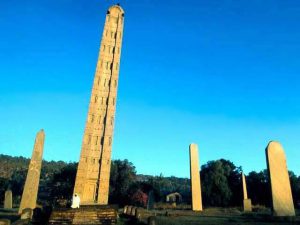
Lalibela The Rock Hewn Churches of Lalibela were cut out of a living rock during the time of King Lalibela, who ruled Ethiopia from his capital Roha, now Lalibela. The churches are 11 in number, located in three groups. The first groups of Churches are, Bete Medhane Alem, Bete Mariam, Bete Meskel Bete Dengil, BeteGolgota, and Bete Michael. The second groups of churches are Bete Gebriel and Rufael, Bete Amanuel, Bete Markorios, connected by a long underground tunnel, Bete Abba Libanos. The last church is Bete Giorgis, a free standing church with architectural elegance and perfection. The churches were curved in the 12th and 13th Centuries. It is believed that the carving of all the churches took some 24 years. Archaeologists say it would have taken the work of 40,000 work force to carve these churches, courtyards and caverns out of a living rock. Described by most travel writers as the eighth Wonder, the churches were registered under the list of World Heritage Site in 1978.
Gondar Founded by Emperor Fasiledes, Gonder was the Capital city of Ethiopia in the 17th and 18th centuries.The Founder of Gonder, Emperor Fasiledes built his Palace in 1632. His successors built their castles within the Royal Enclosure. Fasil Ghebbi means the Premise of King Fasiledes in Amharic, the working language of Ethiopia. The Castles of successive Emperors who ruled the country from Gonder are surrounded by a 900 metres long wall. As a true evidence of an architectural beauty deeply marked by the country’s ancient civilization, the Royal enclosure (Fasil Ghebbi) was registered by UNESCO as s World Heritage Site in 1980.
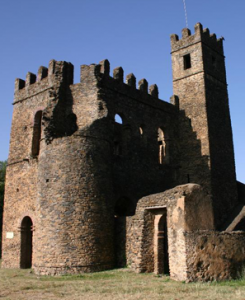
The Simien Mountains National Park The Simien Mountains National Park is found in Amhara National Regional State North Gonder administrative Zone. This National park is 140 kilometers North of Gonder, the 17th and 18th Centuries Capital of Ethiopia. The park is one of the first sites to be included in the list of World Heritage in 1978. The park includes one of the most spectacular landscapes in the world. With jagged mountain peaks, deep valleys and sharp precipices dropping some 1,500 m. The highest Peak is Ras Dashen, the highest mountain in Ethiopia and the fourth in Africa, with an altitude of 4,620 metres, It is also home to some extremely rare animals that are endemic to in Ethiopia such as the Gelada baboon, the Simien fox and the Walia ibex. There are also varieties of flora in the park found no where, but in Ethiopia. The park was listed under endangered sites in 1996 as a result of the decline of the number of Walia Ibex due to human intervention in the park. But the number of these rare species is now in the rise.
The Lower Valley of Awash
The Lower Valley of Awash is found in Afar Regional State. This is a site of Paleo-anthropological research. Tremendous findings are registered in the area contributing a lot in the search for human origin and evolution.The most spectacular discovery of Lucy, Australopithecus Afarensis, a 3.2 million years old hominid in 1974, paved the way for more achievements in the study of human origin. The discoveries registered by the Middle Awash Research Project, an international, multi disciplinary scientific Study with the objective of establishing an accurate geological
information for elucidating human origins and evolution, has established the region as one of the world’s most important paleontological sites with the discovery of the most ancient hominids dating between the time period of 5.3 – 3.9 million years. The recent achievement with the discovery of Selam, a fossil that is the most complete and 150,000 years older than Lucy, is another testimony for the importance of the region for the study of human origin. The Lower Valley of Awash was included in the list of World heritage sites in 1980.
The Lower Valley of Omo The Lower valley of Omo is found in South Nations, Nationalities and Peoples Regional State. The discovery of many human and animal fossils and stone tools in the valley has been of fundamental importance in the study of human evolution. Omo is a river that is 760 kilometres long that streches from the high lands of West Shoa to Lake Turkana, one of the Great Rift Valley lakes. The entire Omo river basin is an important geologically and archaeologically. Several hominid fossils and archaeological localities have been excavated by French and American teams. The oldest ever found stone tools dates back to about 2.4 million years ago. Because of its importance for the understanding of the human evolution the site was listed as a World Heritage Ste in 1980.The area is also home to people with diverse cultures and natural beauty with national parks and an amazing flora and fauna.
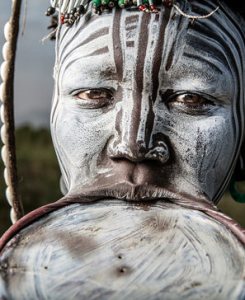
Tiya Tiya is located in South Nations, Nationalities and Peoples Regional State. It is found 90 kilometers South of Addis Ababa.The site contains 36 monuments, including 32 carved stelae covered with symbols. They are believed to be marks of the large prehistoric burial complex.This archeological site was listed as World Heritage Site in 1980.
Harar Harar was a major commercial and centre of Islamic learning. It is a walled city. The wall was built during the ime of Emir Nur Ibn Mujahid successor of Ahmad Ibn Ibrahim al-Ghazi also known as Ahmad Gragn (the Left Handed) who conquered the Christian highlands in the 16th century. The wall was constructed to protect the city as its people from possible attacks. It is a 3.5 kilometer long wall with a height of nearly 4 meters. It has five gates and the wall is still intact and is a symbol of the town. The presence of 99 mosques made harar to be considered as the Fourth Holiest City in Islam next to Mecca, Medina and Jerusalem. Harar is a symbol of tolerance and peaceful co-existence of peoples and religions. In recognition of its cultural heritage, the Historic City of Harrar (Jugol) was registered by UNESCO as a World Heritage Site in 2006.
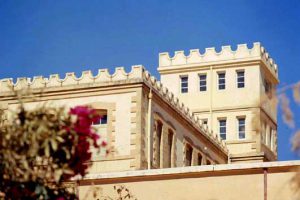
Witness Ethiopia Tours is a privately owned Tour Operator that offers varieties of activities that Ethiopia is known for. Witness Ethiopia Tours is one of the strongest tour operators in Ethiopia, engaged in bringing visitors from all over the world. We believe in high standards of service.
Our Location
- Conventions
- Latest news

- Compendium of ECCE good practices
- Creative cities
- Intangible Cultural Heritage
- Intercultural Dialogue
- Knowledge Hub
- Learning Cities
- Legal Instruments
- Man and the Biosphere
- Memory of the World
- Memory of the World Committees
- Observatory of Killed Journalists
- Open Science Resources
- Policy Monitoring Platform
- Right to education Library
- UNESCO Chairs
- World Book Capital Network
- World Heritage List
- World Radio Day
- World Trend Report Data Catalogue

Heritage is our legacy from the past, what we live with today, and what we pass on to future generations.

Safeguarding our living heritage

UNESCO's university cooperation programme

The updating process of this page is still in progress.

The Man and the Biosphere programme aims to establish a scientific basis for enhancing the relationship between people and their environments.

Since 1993, UNESCO counts the number of journalists killed in the framework of their duties
Africa Niger Building Menelik Avenue Addis Ababa Ethiopia
United Nations Avenue UNON, Gigiri Nairobi Kenya
Primary tourist Attractions for visiting famous Ethiopia Sites and Places
Lake Tana is the largest lake of Ethiopia and located at a distance of 560 km from Addis Ababa. As the outgoing river of the Lake is the Blue Nile, the Lake is considered the origin of the Blue Nile, one of the two main tributaries of the Upper Nile. Known to the ancient Egyptians and Greeks, the lake has an long history of exposure to the ancient world, and from a very early age, it has been one of the centers of Christianity. The lake houses more than 20 churches and monasteries, mostly located on little islands. Read more about Lake Tana . A short distance from the city of Bahir Dar , the Blue Nile falls of a 60m high cliff at the Blue Nile Falls .

For two centuries the walled royal enclosure, Fasil Ghebbi, in Gondar served as the capital of the Ethiopian Empire. Initiated by the Ethiopian emperor Fasilides around 1635 and expanded by his successors, Fasil Ghebbi , surrounded by a 900-m-long wall, contains Indian and Baroque style palaces, churches and monasteries, the likes unknown anywhere else in Sub-Saharan Africa.

Simien Mountains National Park
North of Gondar lies the Simien Mountains National Park , with the fourth highest peak of Africa, with some of the most ragged escarpments of Ethiopia and becoming an increasingly popular destination for mountain trekking. The park is home to some extremely endangered animal that only occur in Ethiopia, like the Ethiopian Wolf and the Walia Ibex, a wild goat, the gelada baboon and the Lammergeier, with its 3m wingspan.

The Kingdom of Axum developed enormous stellae, the largest of which are protected as a UNESCO World Heritage Site. The kingdom officially adopted Christianity as the state religion in the fourth century AC. The Ethiopian Orthodox Church claims that the Church of Our Lady Mary of Zion in Axum houses the Biblical Ark of the Covenant, in which lie the Tablets of Law upon which the Ten Commandments are inscribed.

The Gheralta region is famous for its rock-hewn churches, most of which are carved out of rock walls of often incredibly unreachable places. While Lalibela has the highest density of rock-hewn churches, the Tigray region has both the largest number of churches as well as the older ones, some of the dating back to the fourth century.

Yeha Temple
The temple of Yeha is the oldest standing building in Ethiopia, located at the village of Yeha. The structure of the building is similar to ancient buildings in South Arabia dating to around 700 BC and assuming the same age, the Temple of Yeha is the oldest African stone building of Africa south of the Sahara.

Rock hewn churches of Lalibela
Debatably the greatest tourist attractions of Ethiopia are the rock hewn churches of Lalibela. 11 monolithic rock-hewn cave churches form the 13th-century make up the 'New Jerusalem' at Lalibela, a small town with circular-shaped two storied houses. Lalibela is one of the holiest places of the Ethiopian Church, attracting thousands of tourists every year.

Living culture and people of Ethiopia
Ethiopia is incredibly rich in living culture. With more that 85 different tribes, each tribe has its own traditions and events that are celebrated at different moments an places. Moreover, there are so many beautiful artifacts offered in most charming souvenir shops.

Traditional huts and houses of Ethiopia
Well not as impressive as the many churches of Ethiopia and generally overlooked, the different shapes and designs of the traditional houses in Ethiopia, hidden treasures for visiting Ethiopia Tourist sites & places waiting for you to be discovered.


IMAGES
VIDEO
COMMENTS
The first two sites in Ethiopia added to the list were the Rock-Hewn Churches, Lalibela, and the Simien National Park, both at the Second Session of the World Heritage Committee, held in Washington, D.C., in 1978. [4] The most recent sites listed were the Gedeo Cultural Landscape and Bale Mountains National Park, in 2023. [3]
There are nine UNESCO World Heritage Sites in Ethiopia as of 2019. The first sites were listed in 1978. Only one natural site is included in the list and the other eight are all cultural sites. Ethiopia's numerous cultural heritage sites make sense given the fact that Ethiopia contains most ancient anatomical evidence of humans on Earth.
The Simien National Park was established as one of the first UNESCO World Heritage sites in the country in 1978. The tallest mountain in Ethiopia, Ras Dashan, can be found in the park, where it stands at 14,930 feet. The park is noted for its amazing landscapes that have jagged peaks, deep valleys and sharp cliffs, in part due to millions of ...
World Heritage partnerships for conservation. Ensuring that World Heritage sites sustain their outstanding universal value is an increasingly challenging mission in today's complex world, where sites are vulnerable to the effects of uncontrolled urban development, unsustainable tourism practices, neglect, natural calamities, pollution, political instability, and conflict.
The 18th century of Ethiopia was Gondar, where then Emperor Fasiladas established his legendary fortresses. This UNESCO World Heritage Site is today a beautiful museum compound and a wonderful tourist attractions in Ethiopia that exhibits the final centuries of the country's kings. Sitting in a bowl of hills, the Camelot of Africa is a ...
Tentatively UNESCO registered sites in Ethiopia: The Bale Mountains National Park (2008) The Dirre Sheik Hussein Religious, Cultural and Historical Site (2011) The Sof Omar natural and cultureal heritage. (2011) The Gedeo Mixed Cultural and Natural Landscape (2012) The Melka Kunture and Bachilt Archaeological Site. 0.
the Protection of the World Cultural and Natural Heritage, adopted by UNESCO in 1972. whc.unesco.org Fasil Ghebbi, Gondar Region- In the 16th and 17th centuries, the fortress-city of Fasil Ghebbi was the residence of the Ethiopian emperor Fasilides and his successors. Surrounded by a 900-m-long wall, the city contains palaces, churches,
There are a total of nine UNESCO World Heritage sites in Ethiopia, more than in any other African country. Eight sites are of cultural origin and one is natural. This number represents the importance of Ethiopia's rich history. The cultural landscape of Konso (2011) The fortified historic town of Harar Jugol (2006) The ancient city of Axum ...
UNESCO recognizes and protects sites of globally significant, cultural or natural heritage value. In Ethiopia, 8 are cultural and one is natural - the Simien Mountains National Park. Ethiopian Adventure Tours will take you to 7 of these incredible locations on our 16-day Wildlife and History tour - Konso Cultural Landscape and the Lower Valley ...
Events 3. 8 Jun 2013 - 17 Jun 2013. 25 Nov 2009 - 4 Dec 2009. 9 Mar 1999 - 14 Mar 1999. UNESCO Country page. UNESCO/CPE. Intangible Cultural Heritage. UNESCO/CLT/ITH. Cultural Heritage Laws Database.
There are 9 UNESCO World Heritage Sites in Ethiopia. All of these nine sites are listed under the Cultural category. Rock-Hewn Churches, Lalibela. Simien National Park. Fasil Ghebbi, Gondar Region. Aksum. Lower Valley of the Awash. Lower Valley of the Omo. Tiya.
Rock Hewn Churches of Lalibela (The 8th wonder of the world: Lalibela) Lalibela is designated as world Heritage site in 1978. Originally thought to have been built in the 12th century during the reign of King Lalibela, but some have been dated back to the 10th century. There are eleven churches, assembled in three groupings; the Northern Group ...
The UNESCO chose 9 places from Ethiopia to put under its World Heritage Sites List, and among those nine, 8 are cultural and 1 natural. The majority of the sites have been under UNESCO since the late 1970s, early 1980s, a part from two - Harar Jugol, the Fortified Historic Town (2006) and Konso Cultural Landscape (2011) - which have only been recently added to the list.
Mekele. Founded by Emperor Yohannes IV in 1881, Mekele is the main and most modern city in the Northern region of Ethiopia and tourism infrastructure is better than in other parts of the country. Set in a basin at 2,200m in the rocky Tigraian Highlands, the city is clean, organised and vibrant.
UNESCO World Heritage Sites. Ethiopia's immense cultural, historical, festivals, paleontological and natural wealth are reflected in its registered of Ten UNESCO World Heritage Sites, the most of any country in Africa. Eight of these ten sites are cultural, one festival of Meskel and one the Simien Mountains National Park is natural.
From the famous rock-hewn churches of Lalibela to the ancient ruins of Axum, these sites offer a glimpse into Ethiopia's fascinating past. The Simien Mountains National Park, Harar Jugol, the Lower Valley of the Awash, the Lower Valley of the Omo, Tiya, Fasil Ghebbi, and the Konso Cultural Landscape are also included on the list. This ...
Rock-Hewn Churches, Lalibela. Simien National Park. Fasil Ghebbi, Gondar Region. Aksum. Lower Valley of the Awash. Lower Valley of the Omo. Tiya. Harar Jugol, the Fortified Historic Town. Konso Cultural Landscape.
THE VALLEY OF THE RIVER AWASH. This is one of the most important paleontological sites in Africa. The remains which were discovered here, and the oldest of which are at least 4 million years old, have provided the evidence for the evolution of man which has altered the conception of the development of mankind.
Published by. Saifaddin Galal , Mar 27, 2024. As of 2022, Ethiopia was among the countries in Africa with the largest number of UNESCO World Heritage sites. The country had nine sites, of which ...
Witness Ethiopia Tours is one of the strongest tour operators in Ethiopia, engaged in bringing visitors from all over the world. We believe in high standards of service. Witness Ethiopia Tours Address: 24 Building, Near Kokeb Hall, Megenagna. 4th Floor, Room No. 28 Phone: +251911785789 +251943181470 +251911712350 Email: info ...
Permanent Delegation of Ethiopia to UNESCO. Délégation Permanente de l'Ethiopie 35, av Charles Floquet Paris 75007 France. mail [email protected]. folder. Ethiopian National Office for UNESCO. P.O. Box 2996 Addis Ababa Ethiopia Ethiopia. mail [email protected]. Contact. Offices.
Phone USA: (++) (1) 304 - 580 - 7741. Email: info@nationalparks_worldwide.com. Skype: daanvreugdenhil. TOP 27 ETHIOPIA TOURIST ATTRACTIONS, SITES & PLACES 4 VISITING: VISIT THE ONLY SUB-SAHARA ANCIENT MONUMENTS; see endemic wildlife, go trekking. Be hosted by charming forester.
Challenge and Prospect of Ethiopian Tourism Policy. Yimer Mohammed. Environmental Science, Geography. 2016. In Ethiopia nature, culture and history merge to form a timeless appeal. The countries impressive tourism potential is truly a land of contrast and extremes, a land of remote and wild place, and of…. Expand.